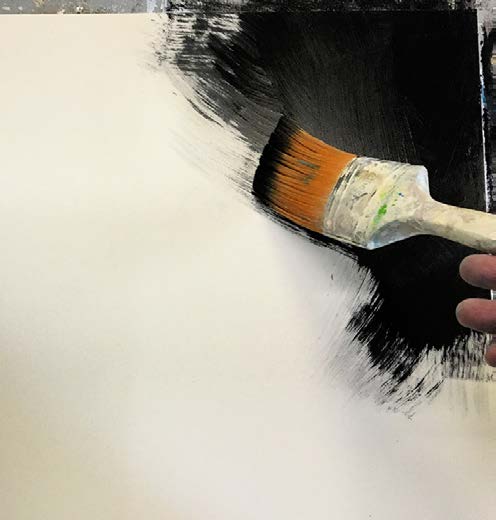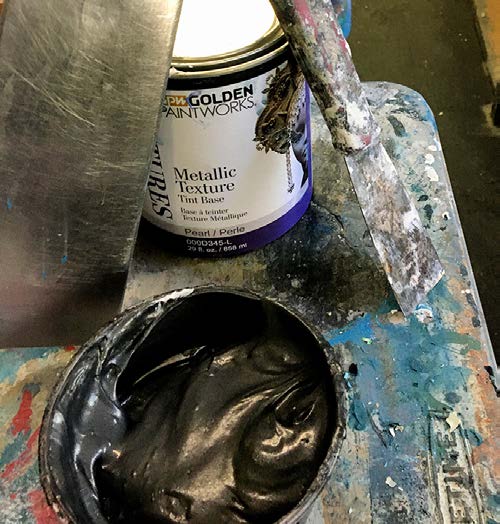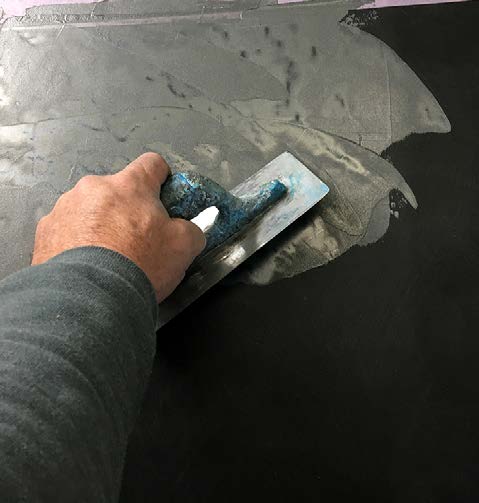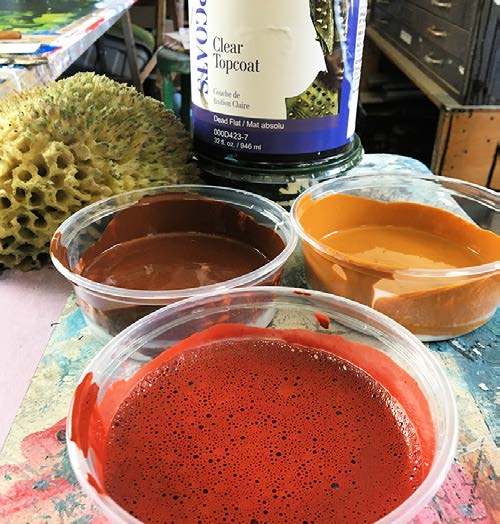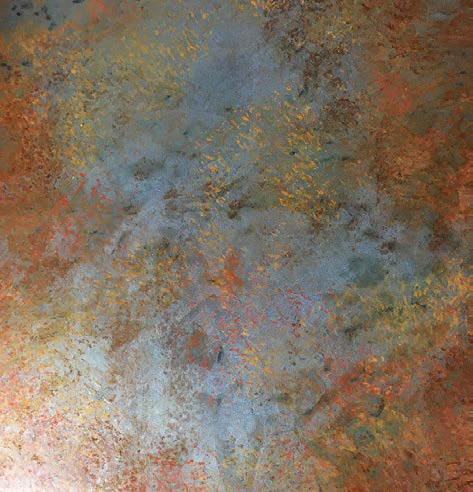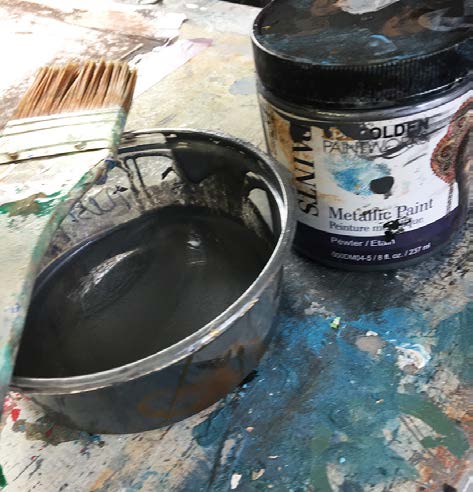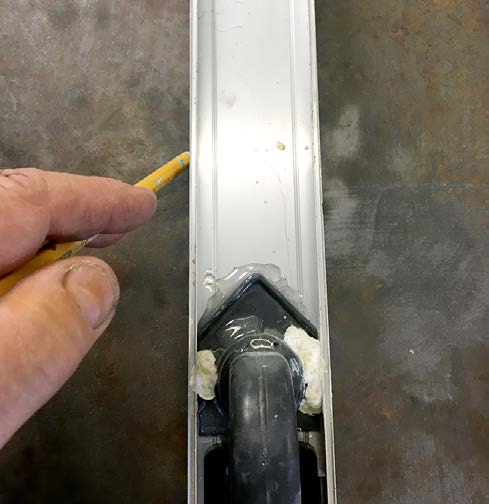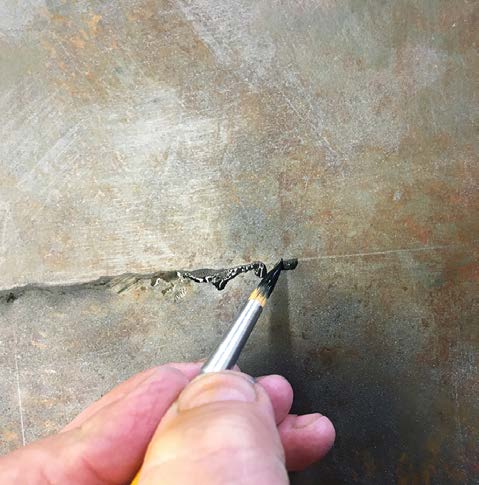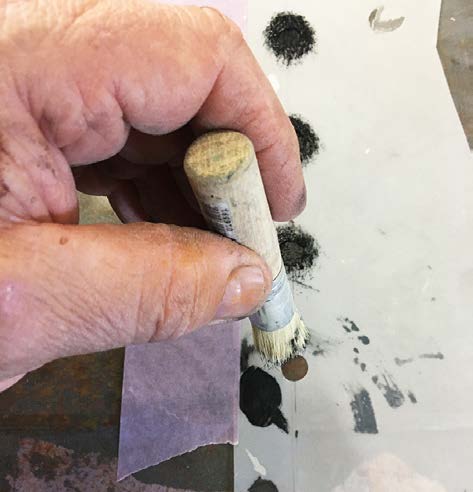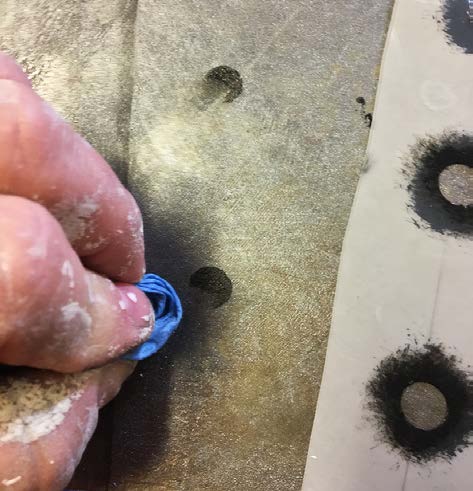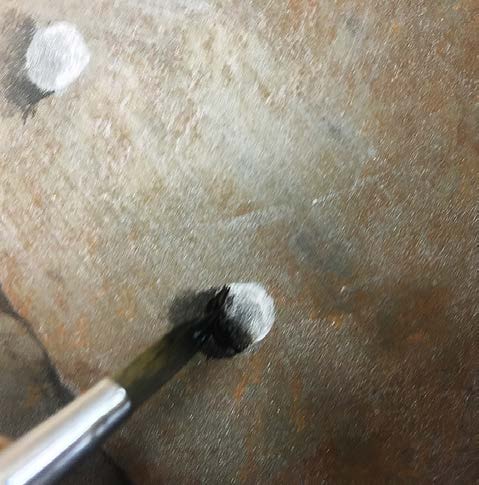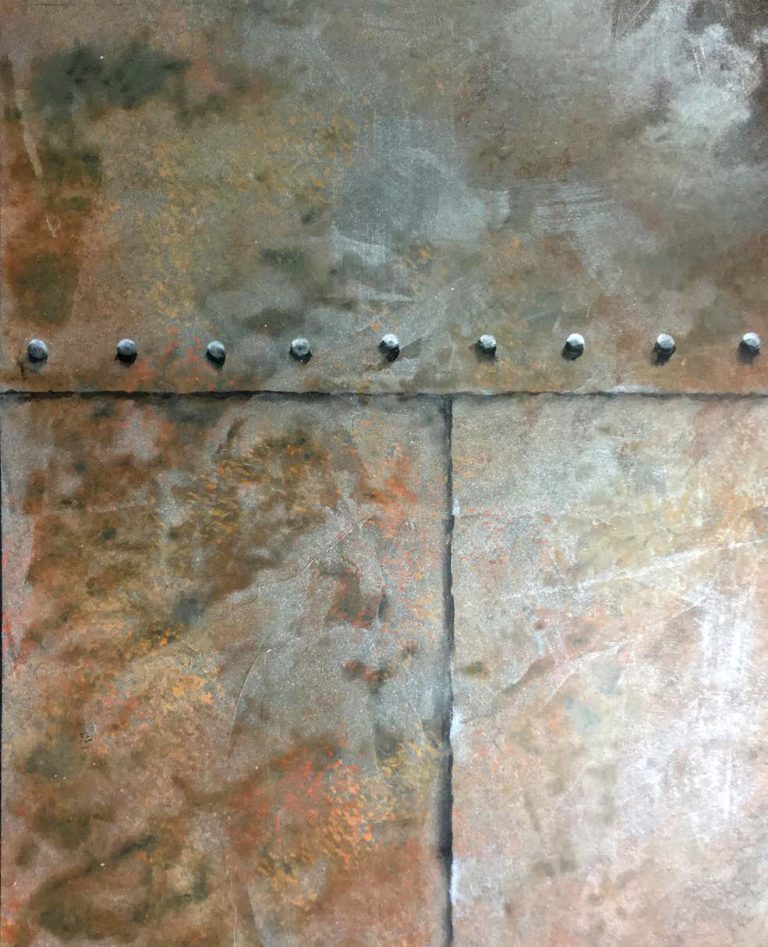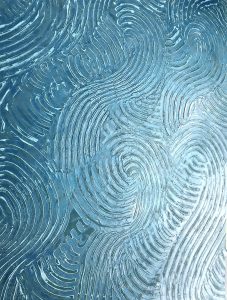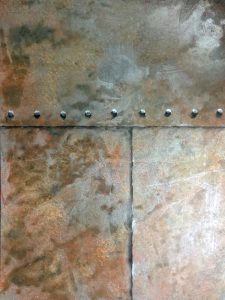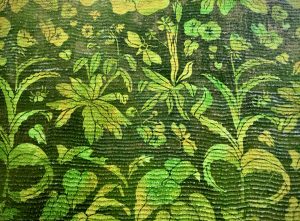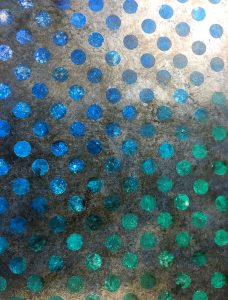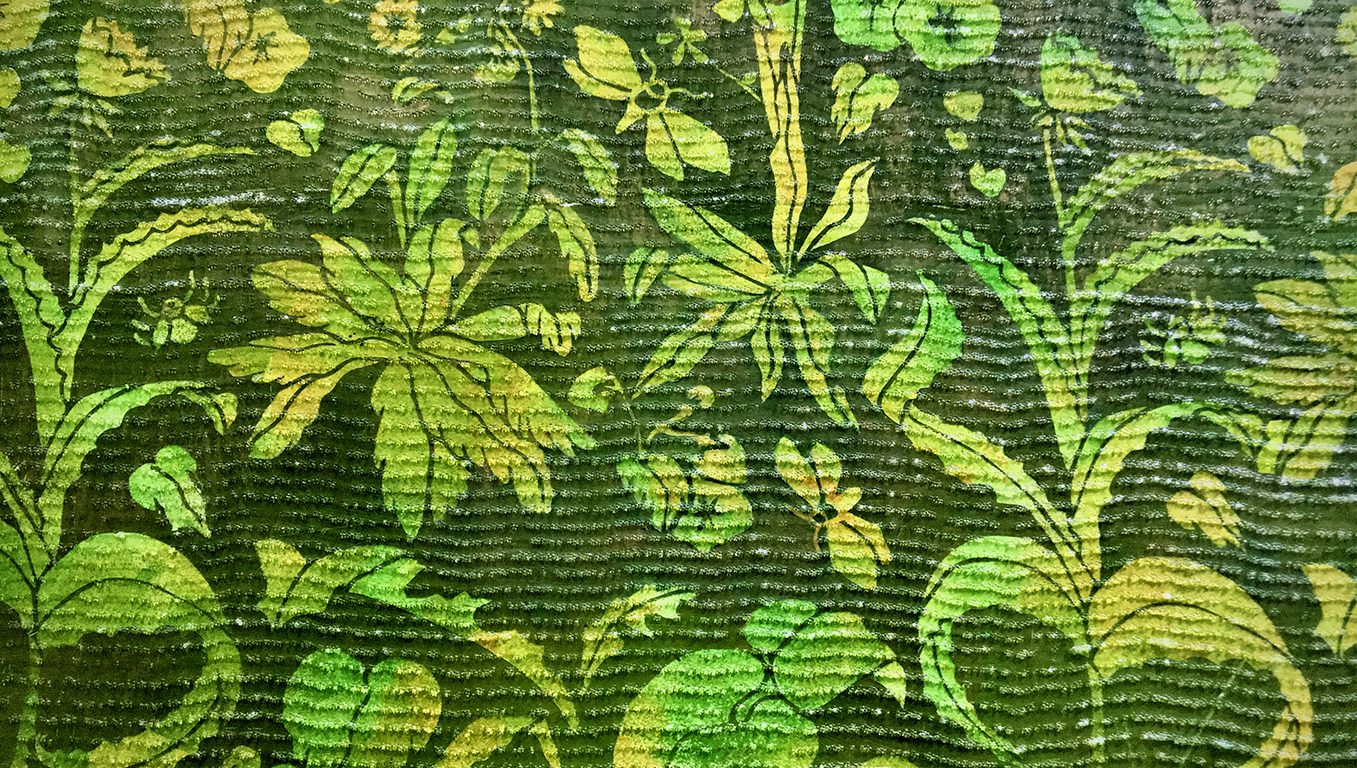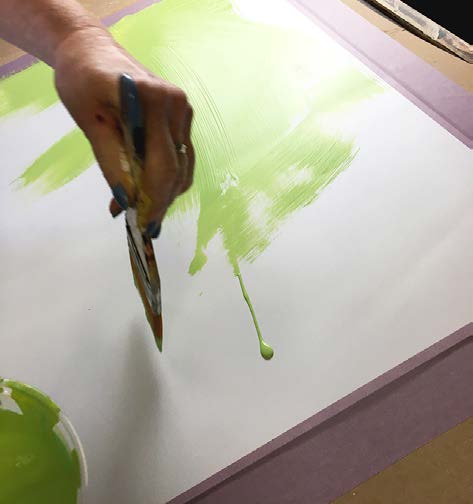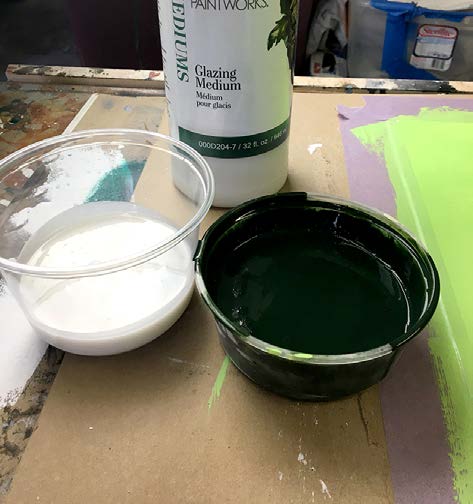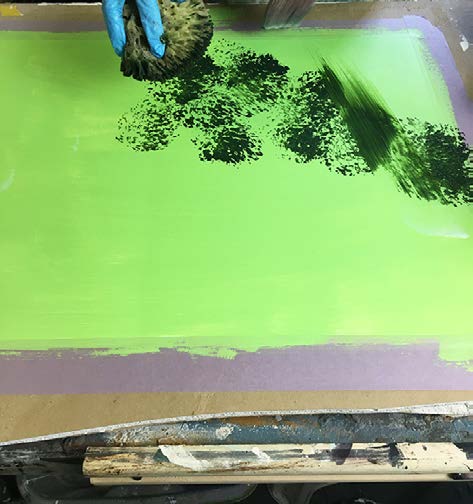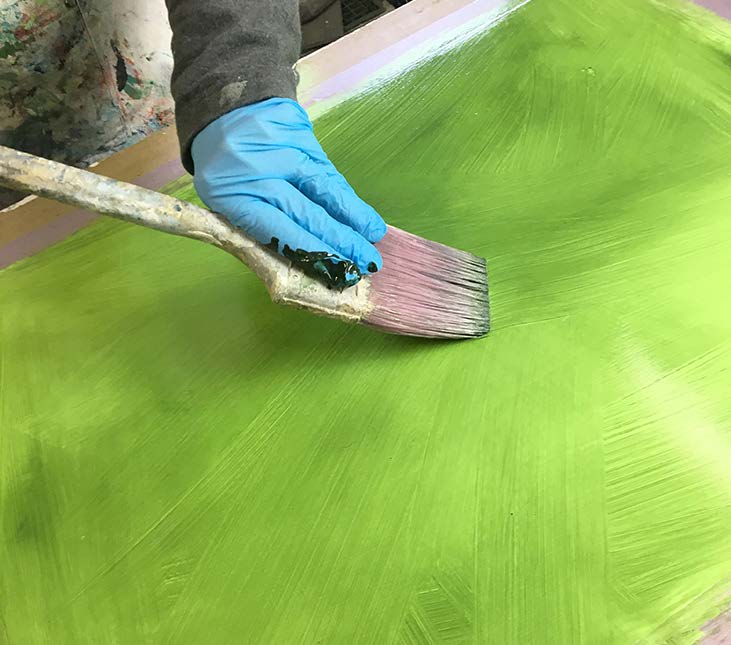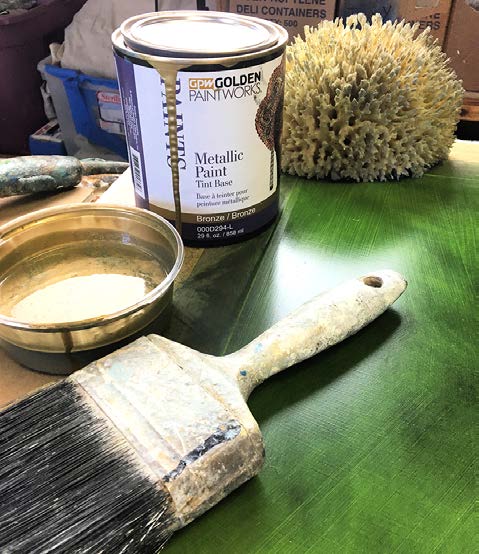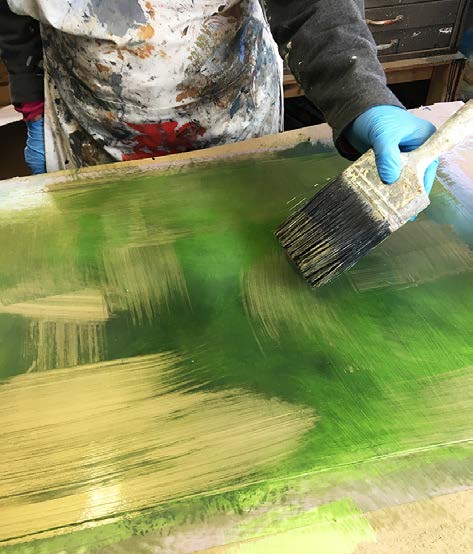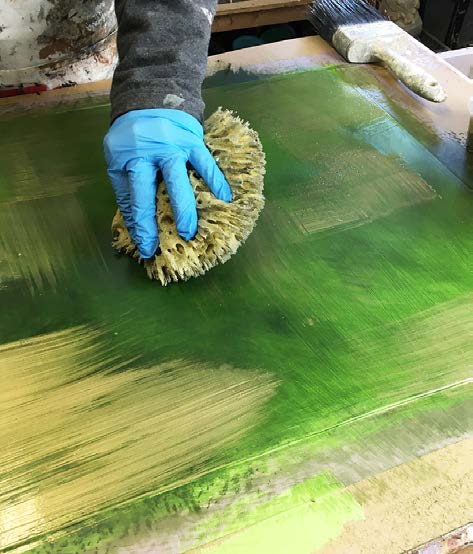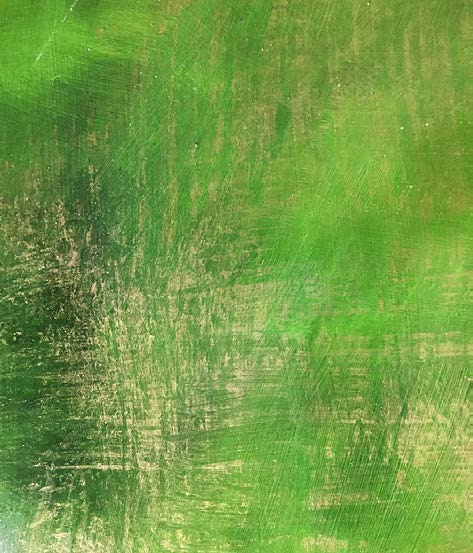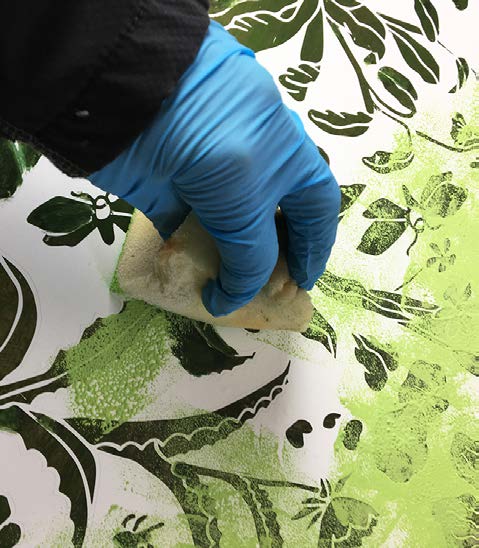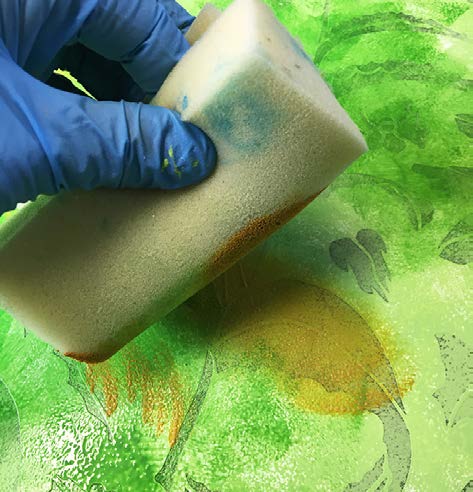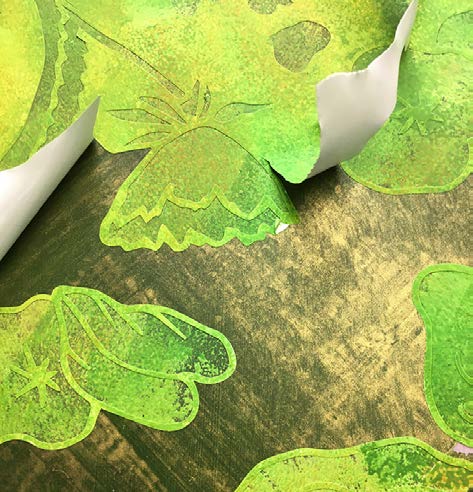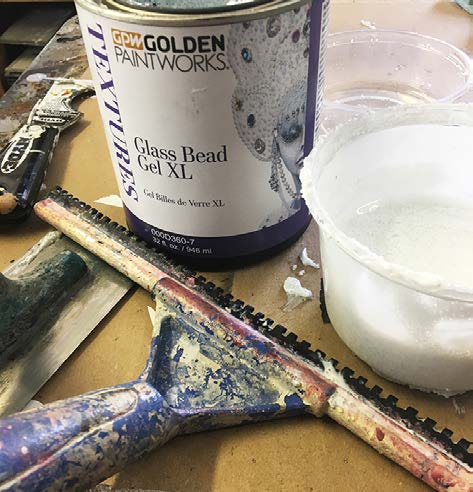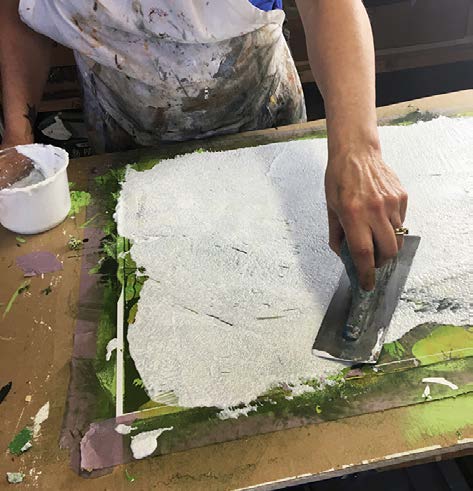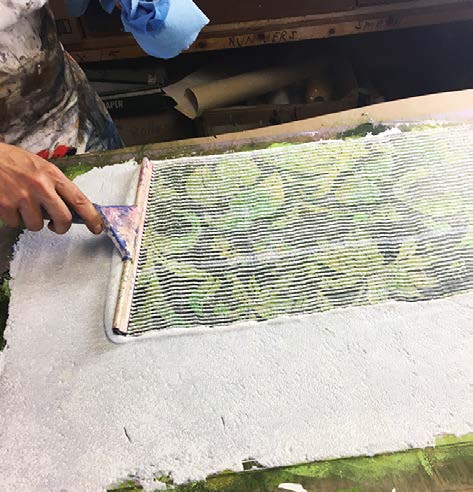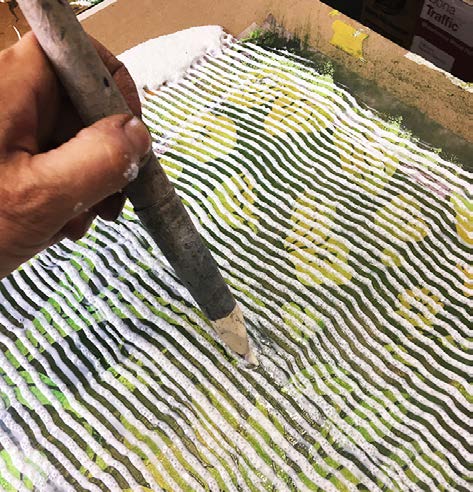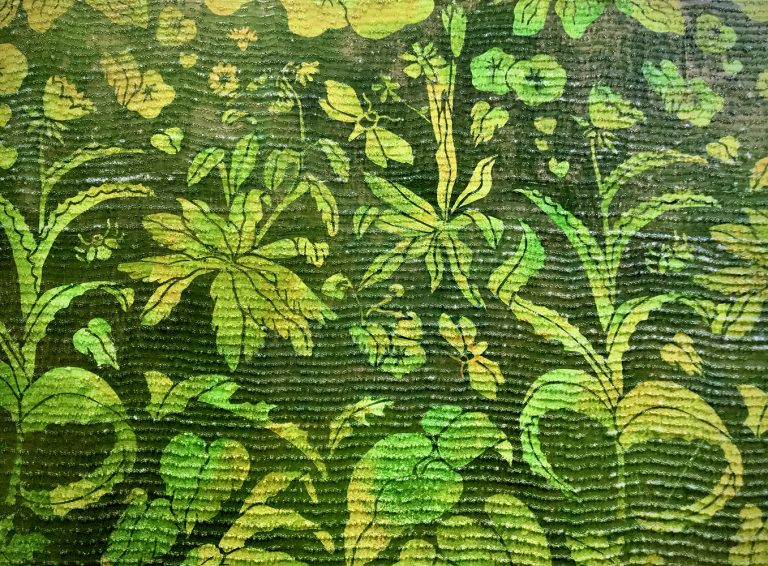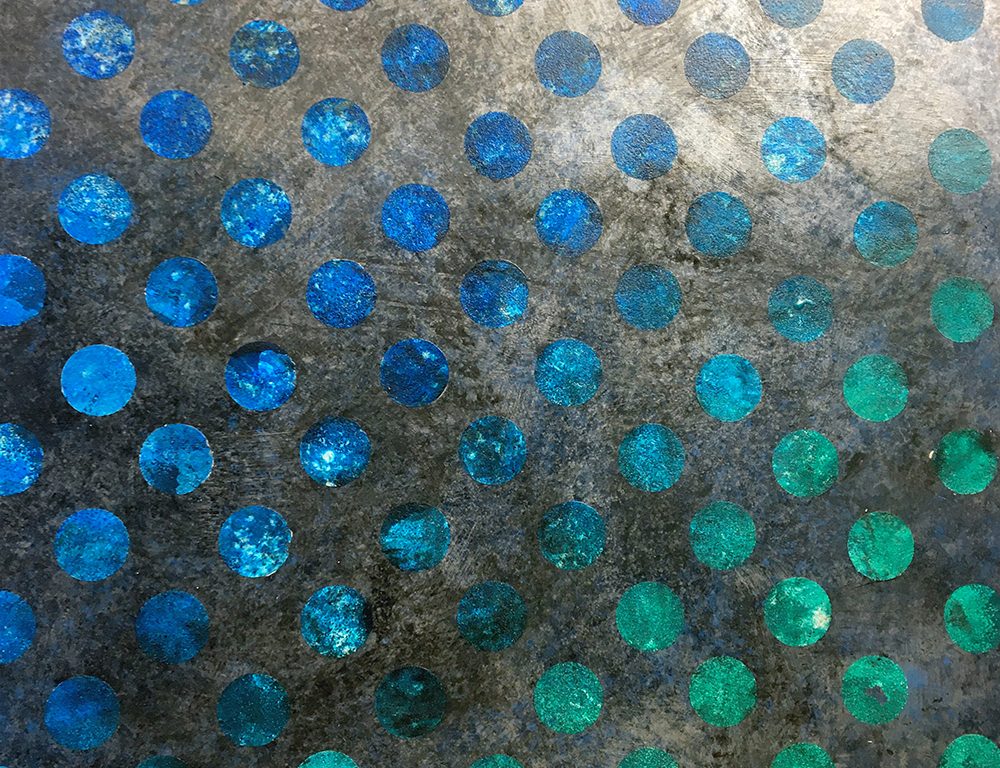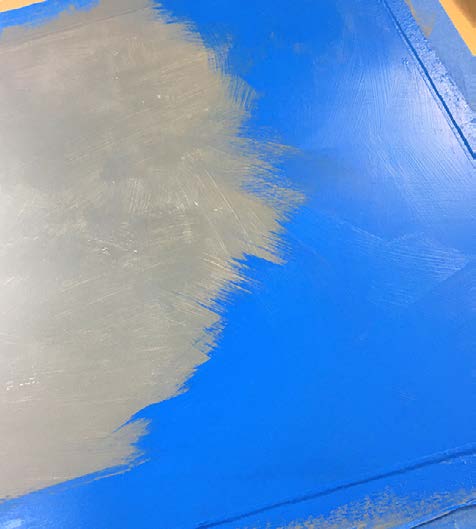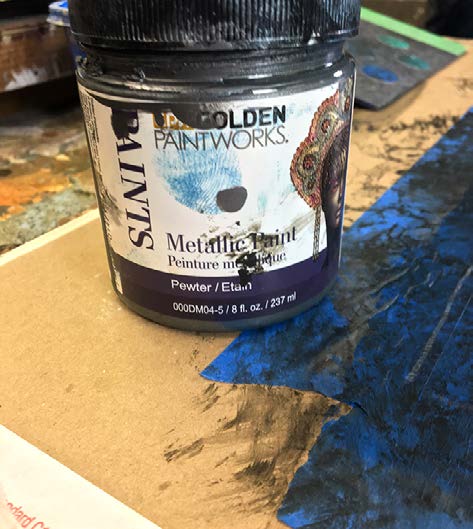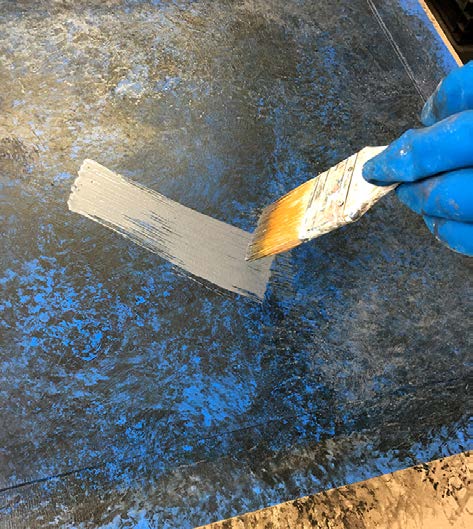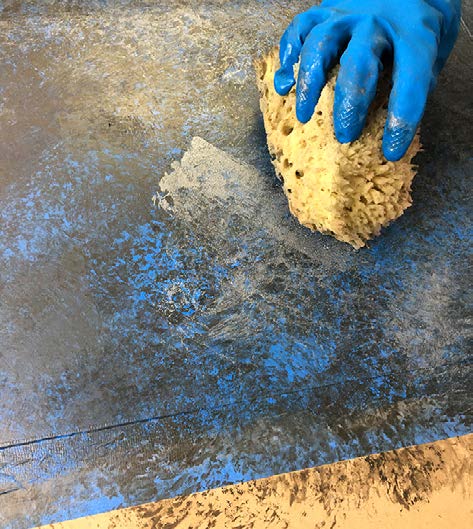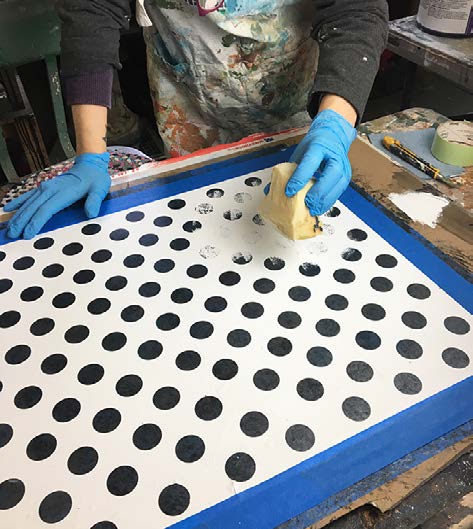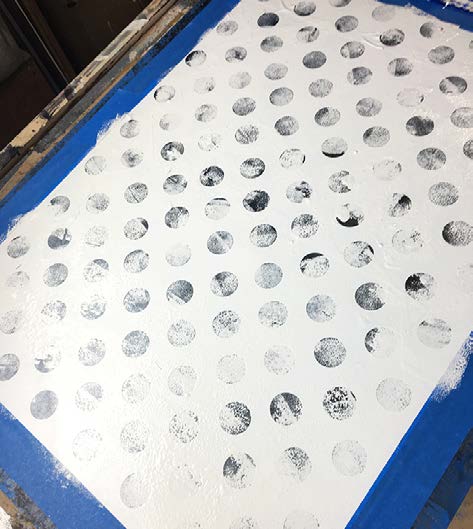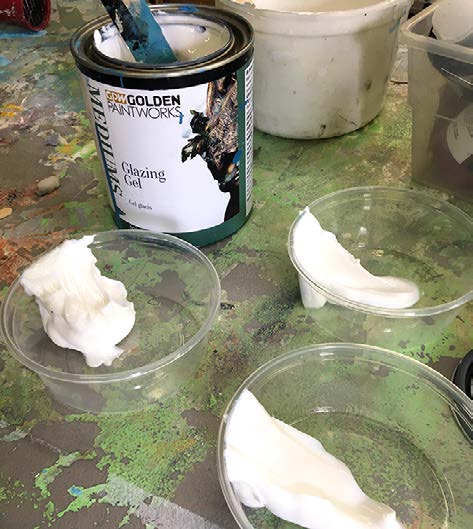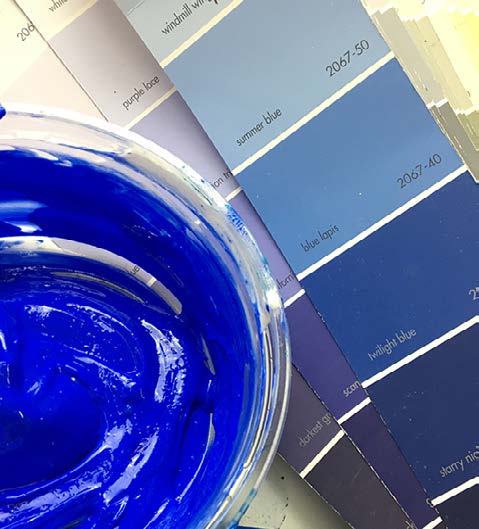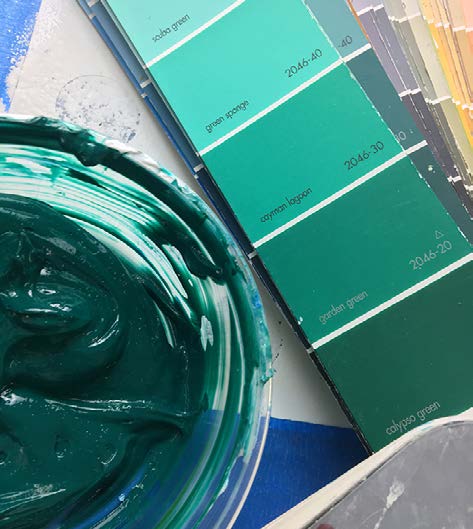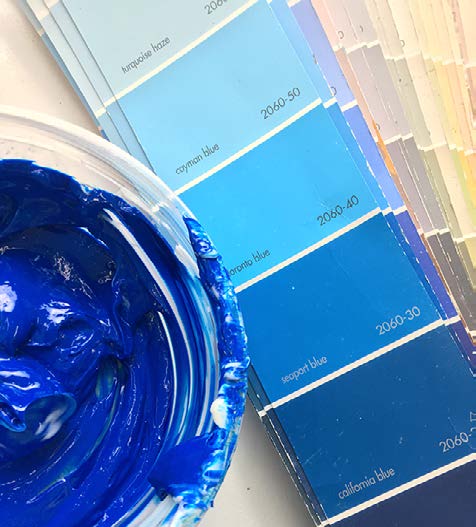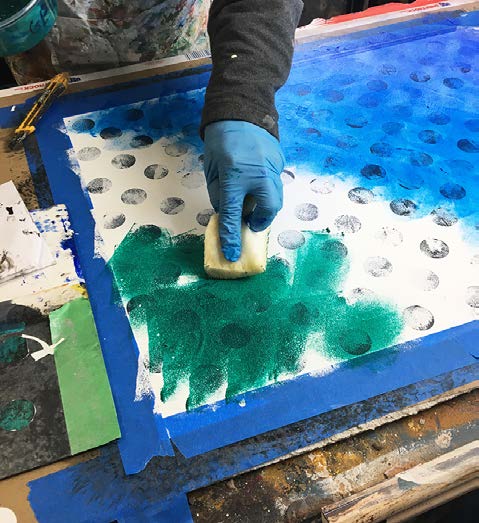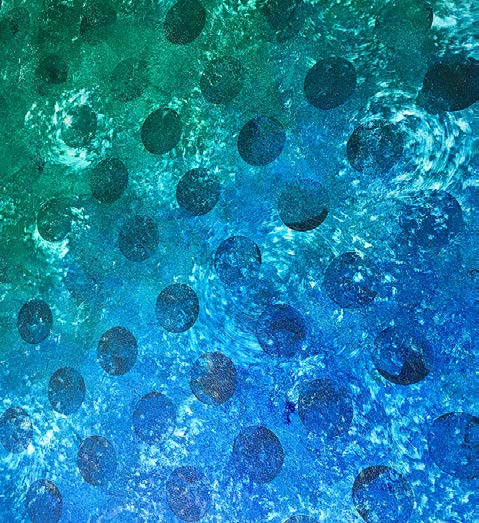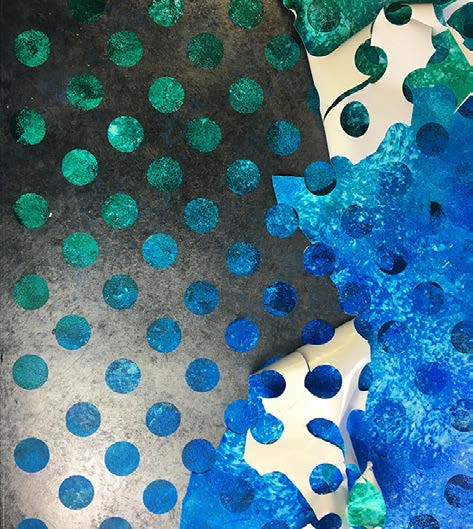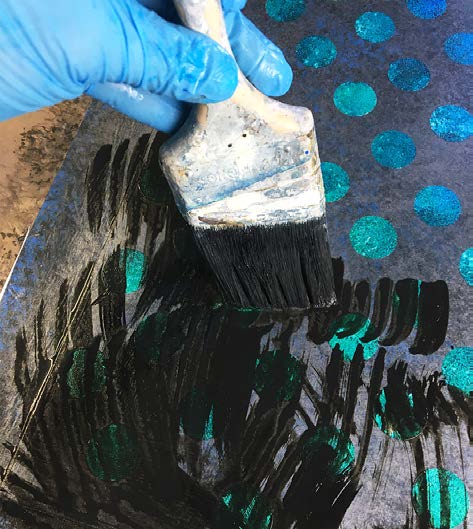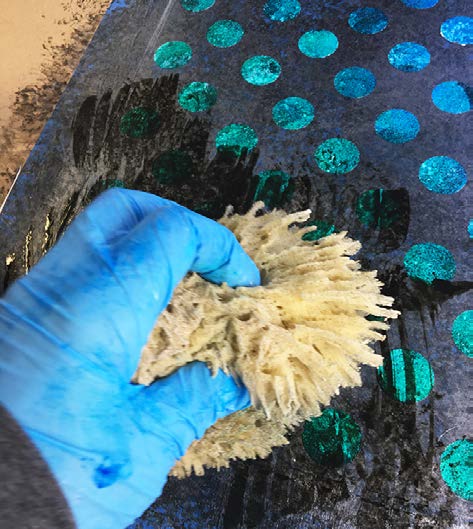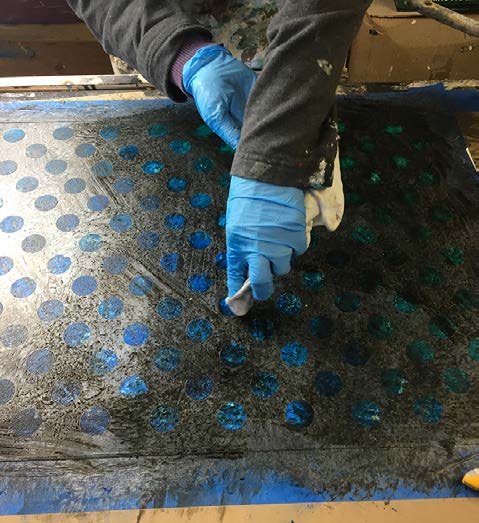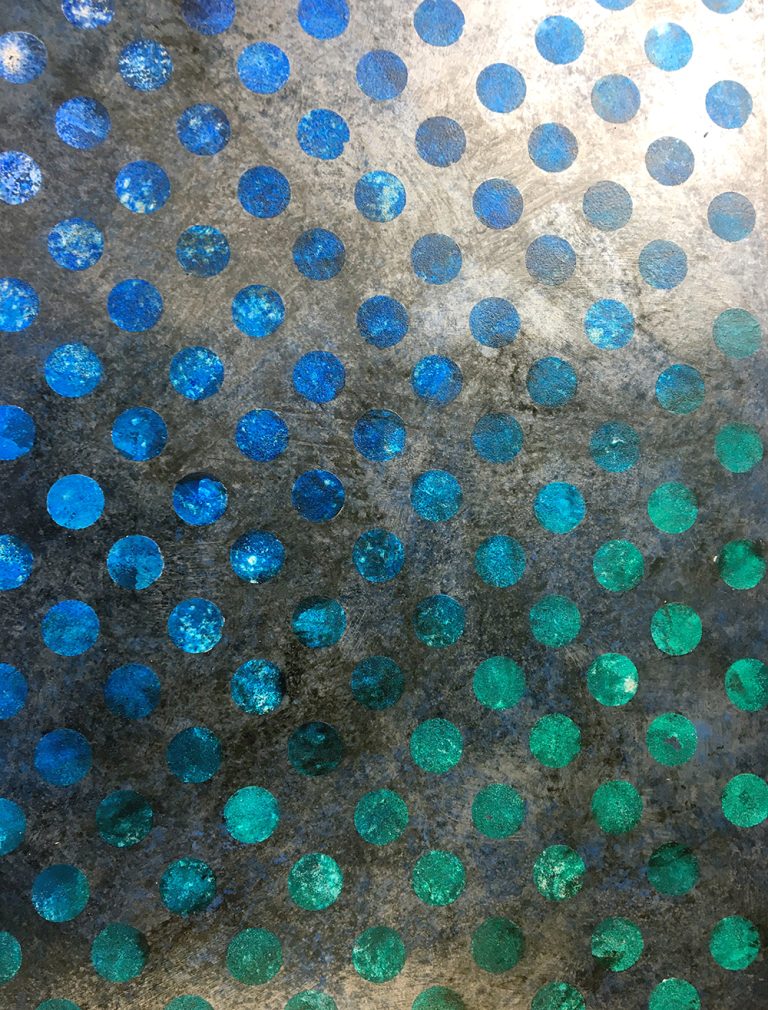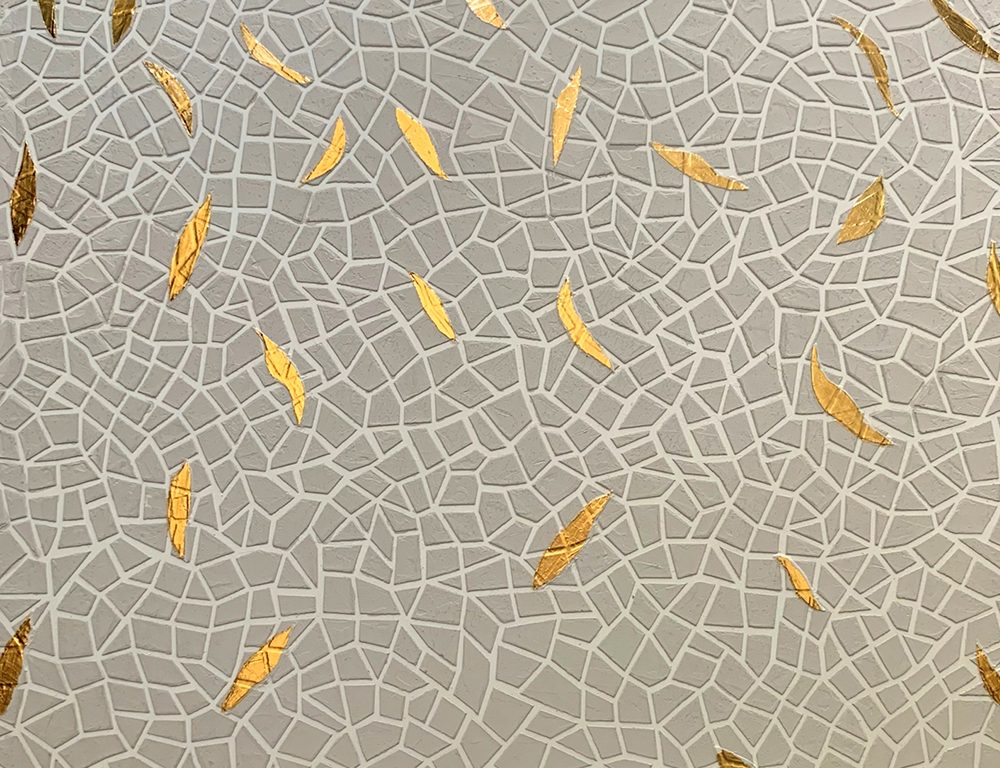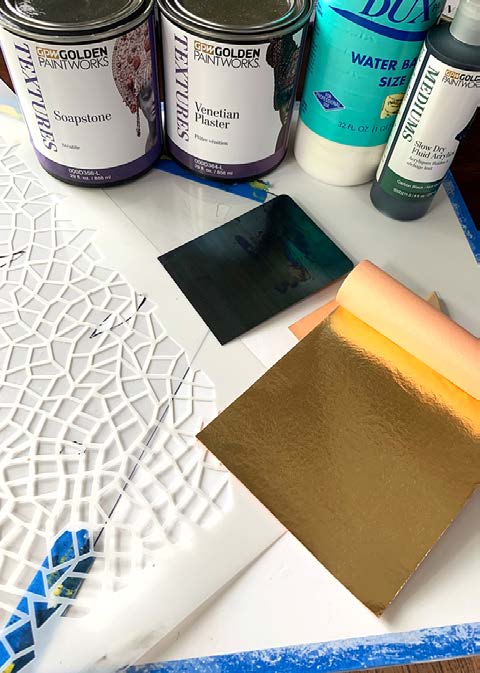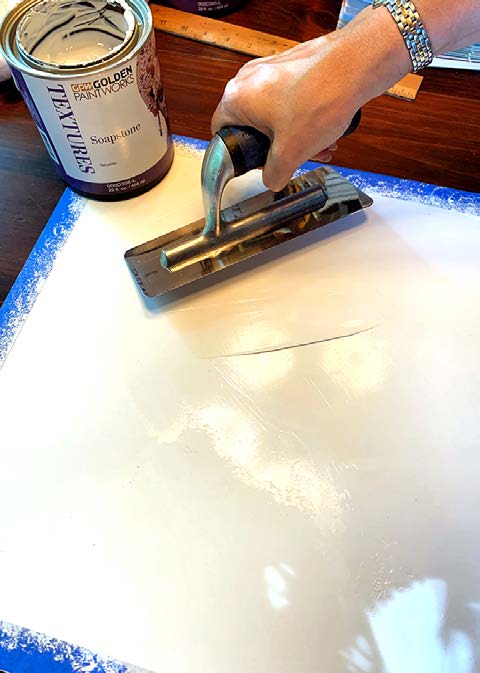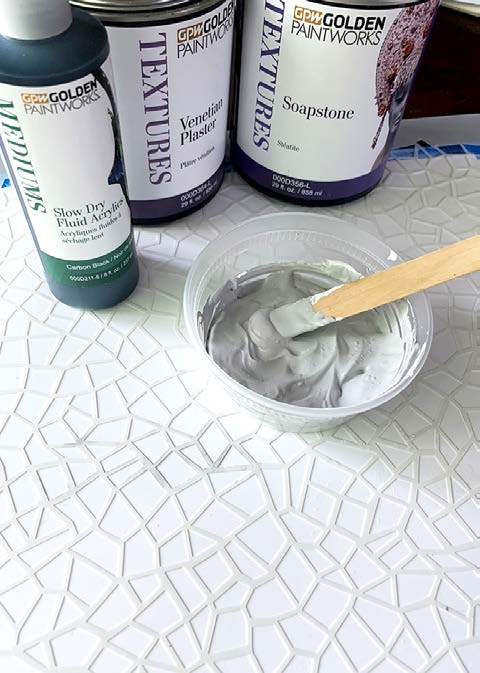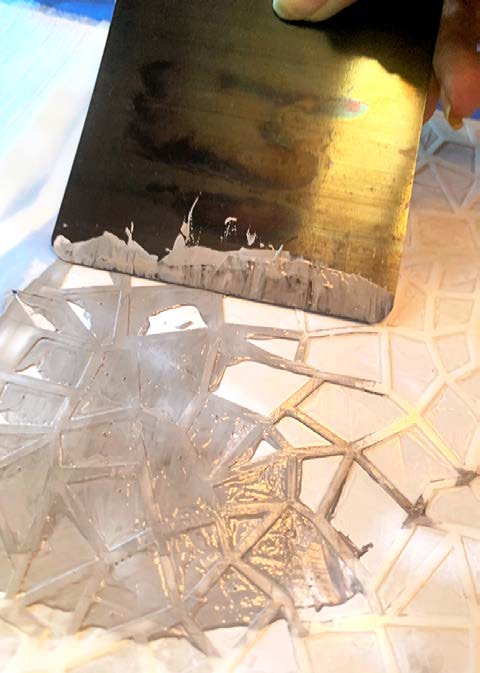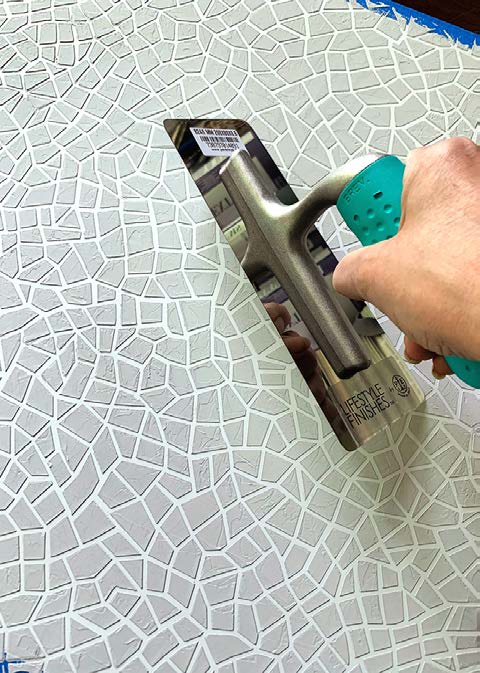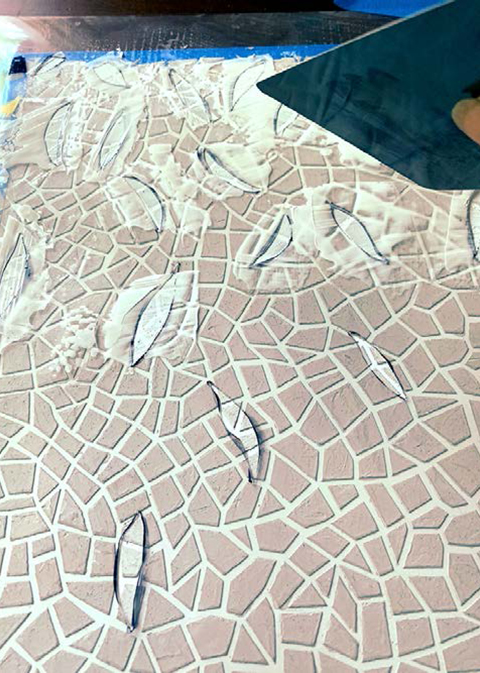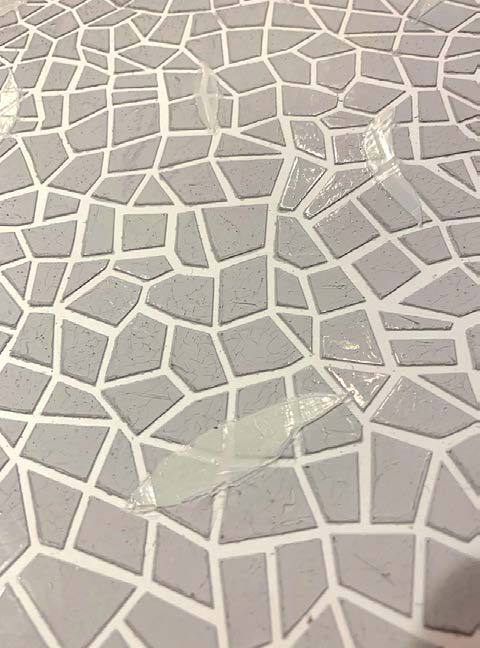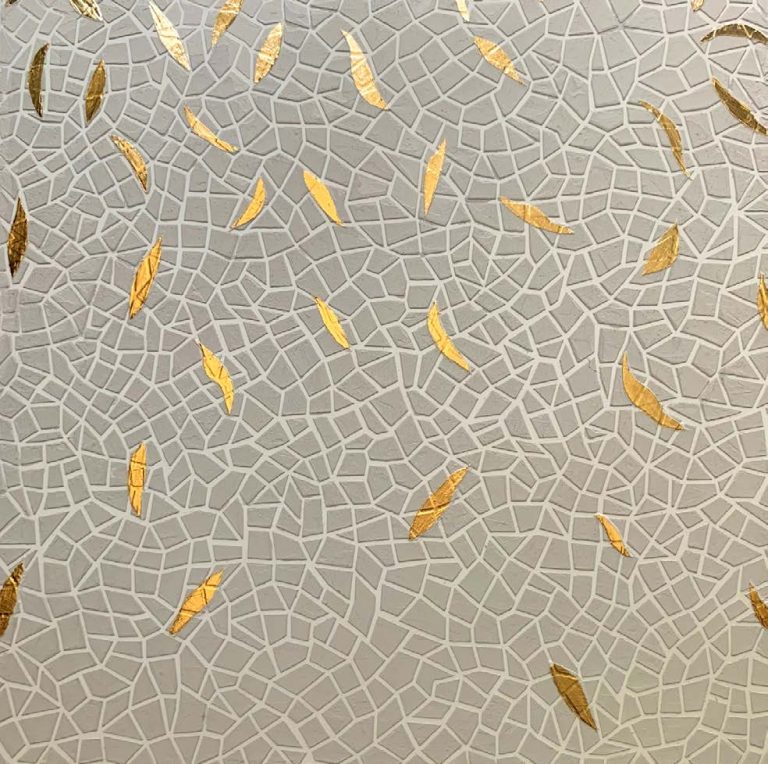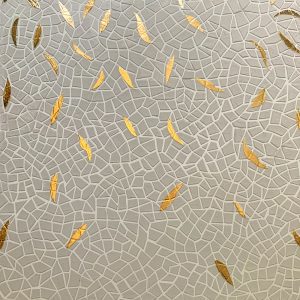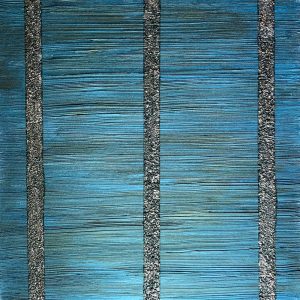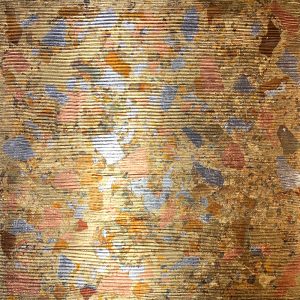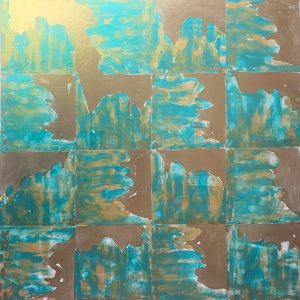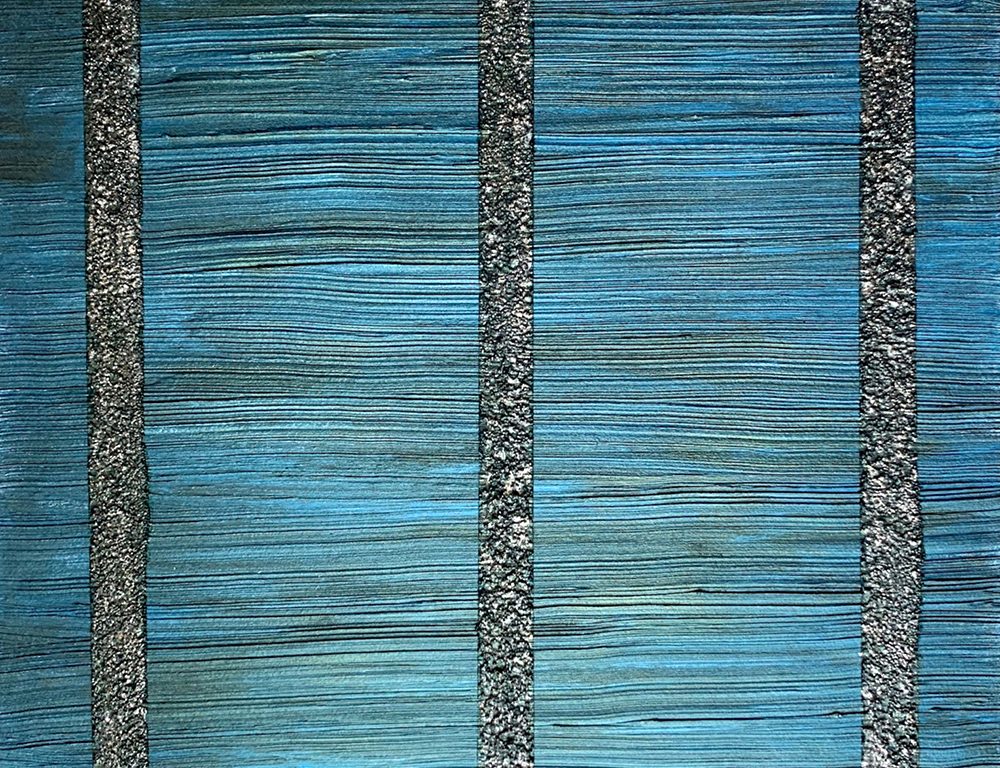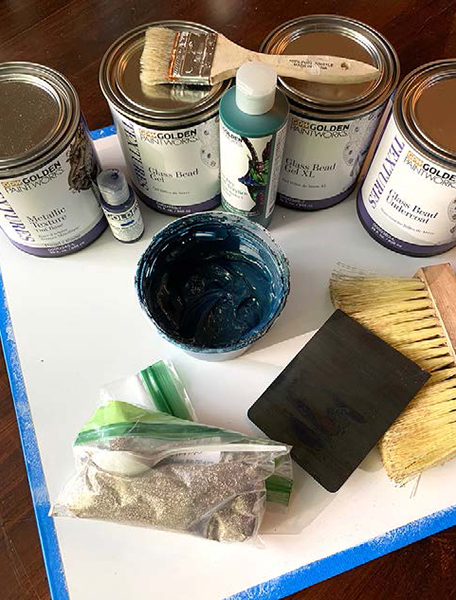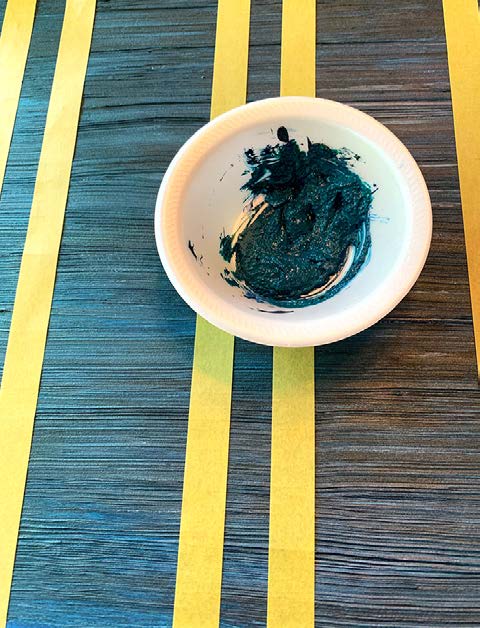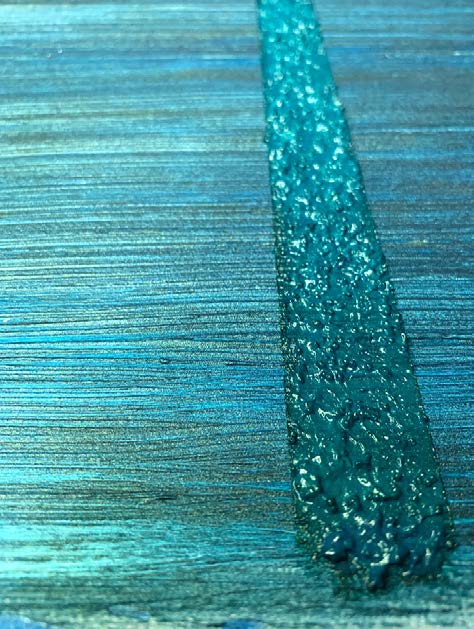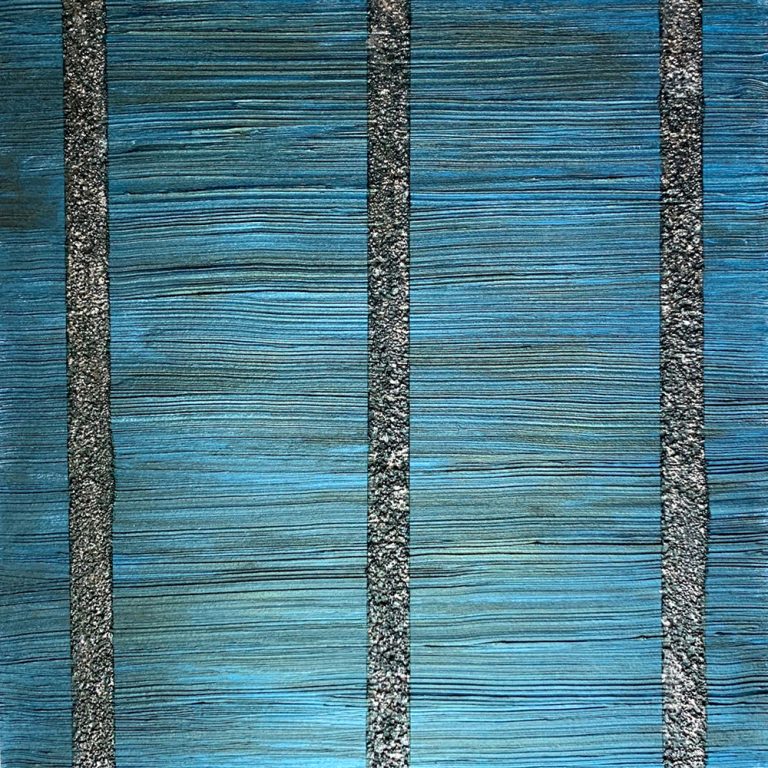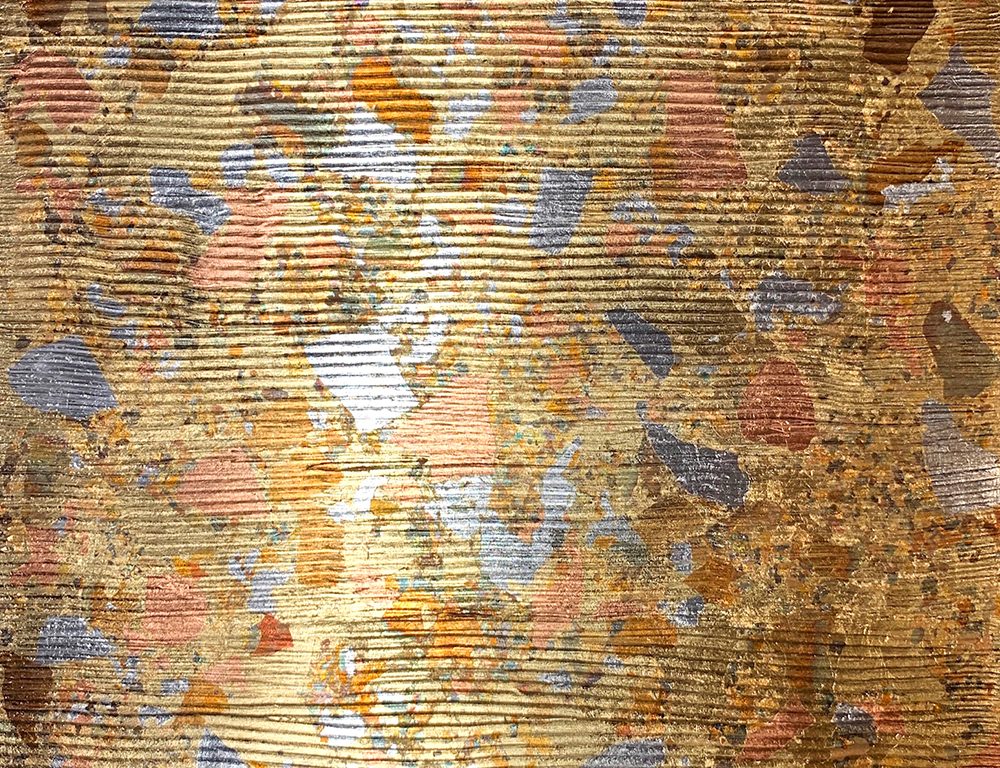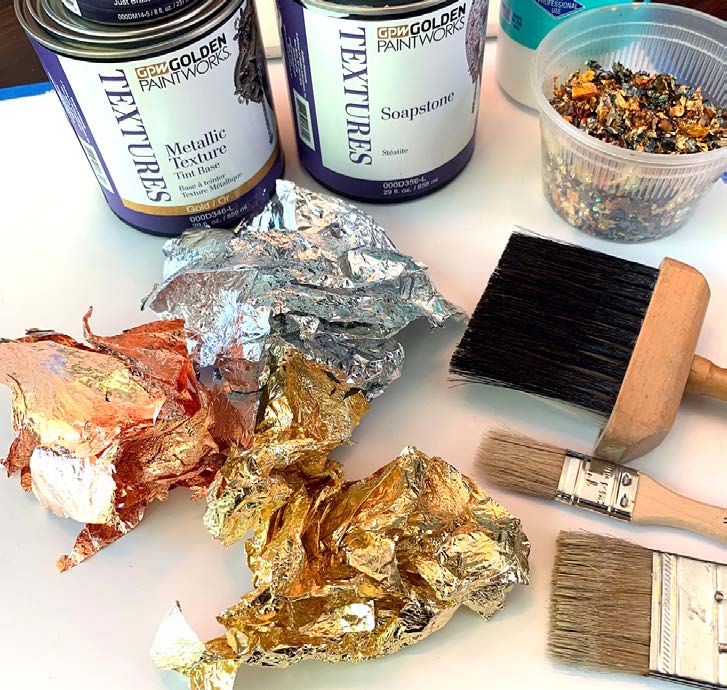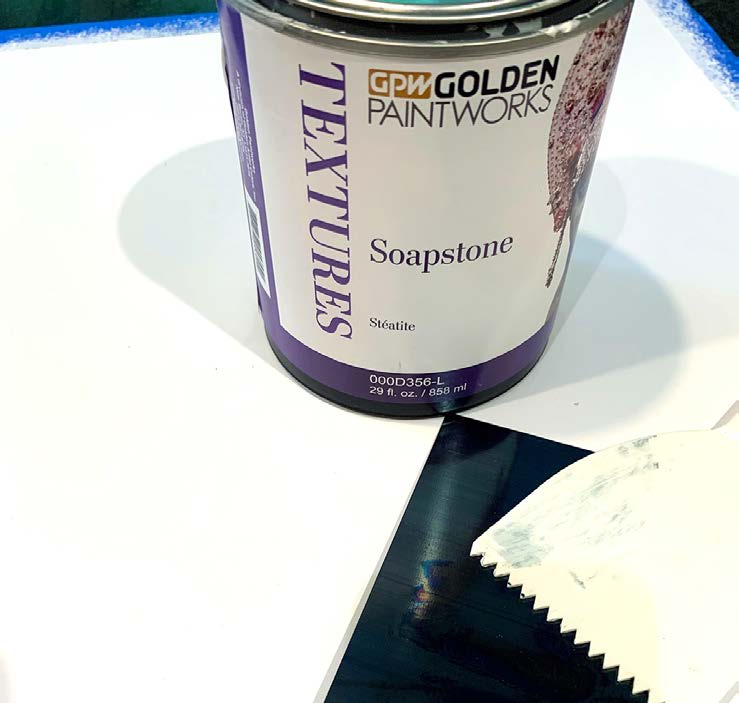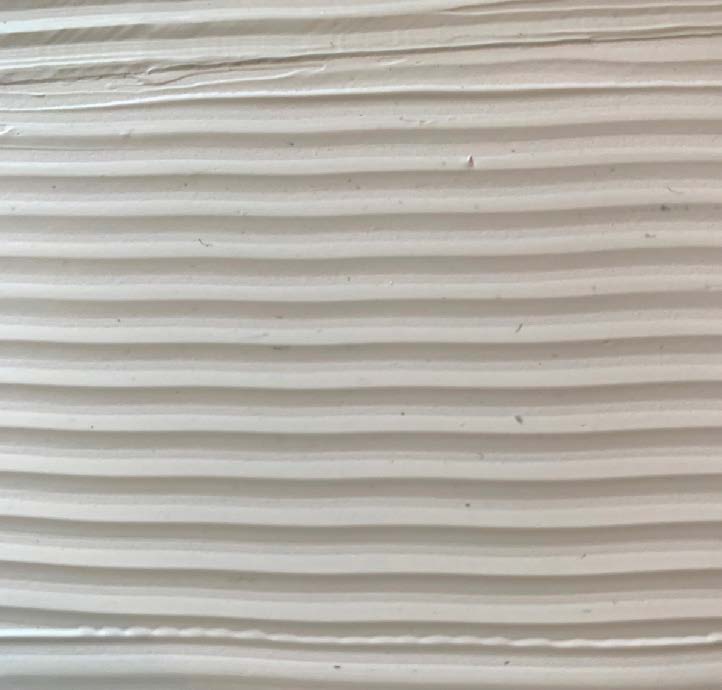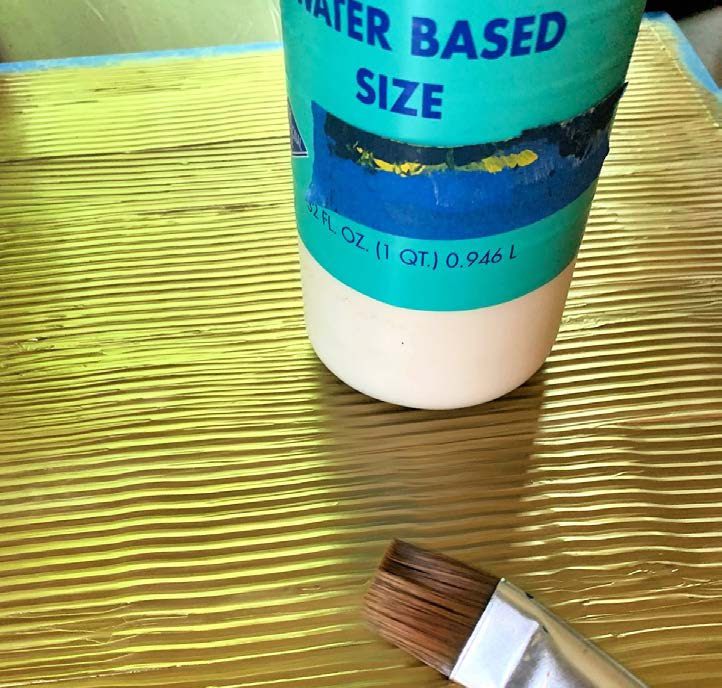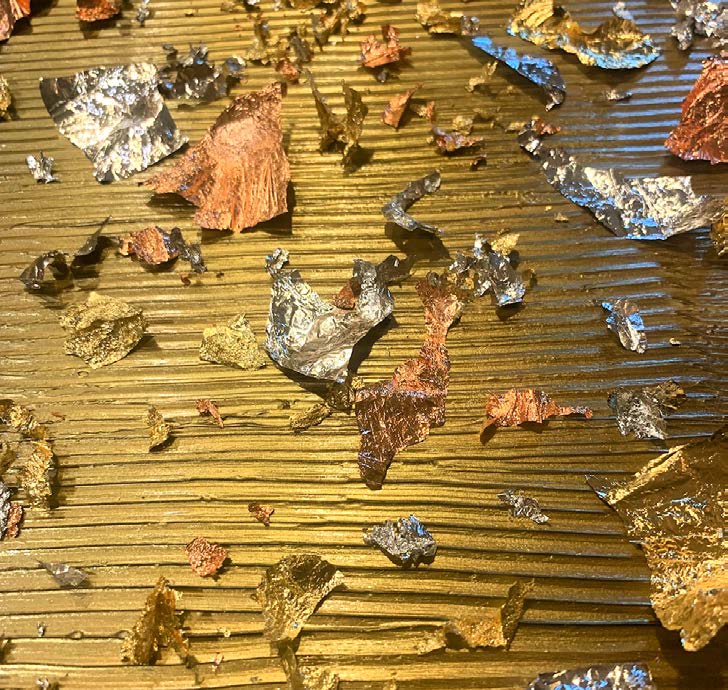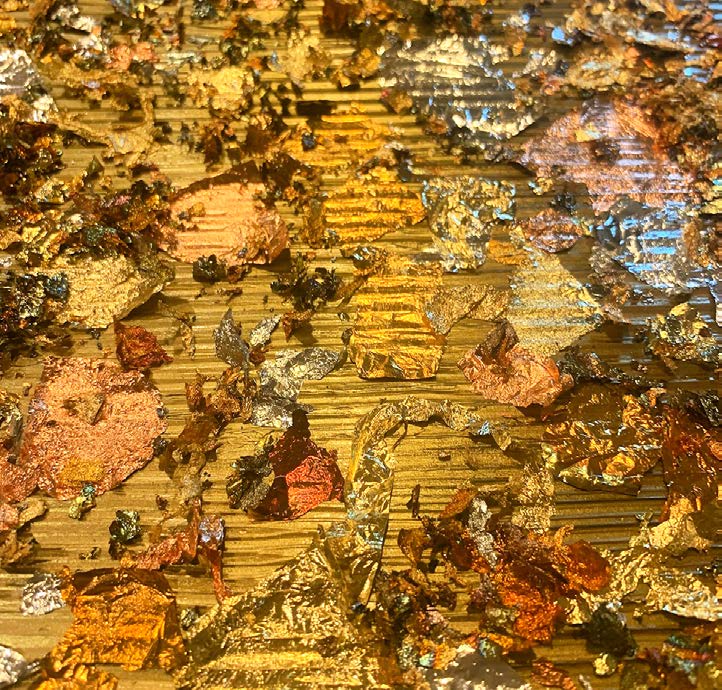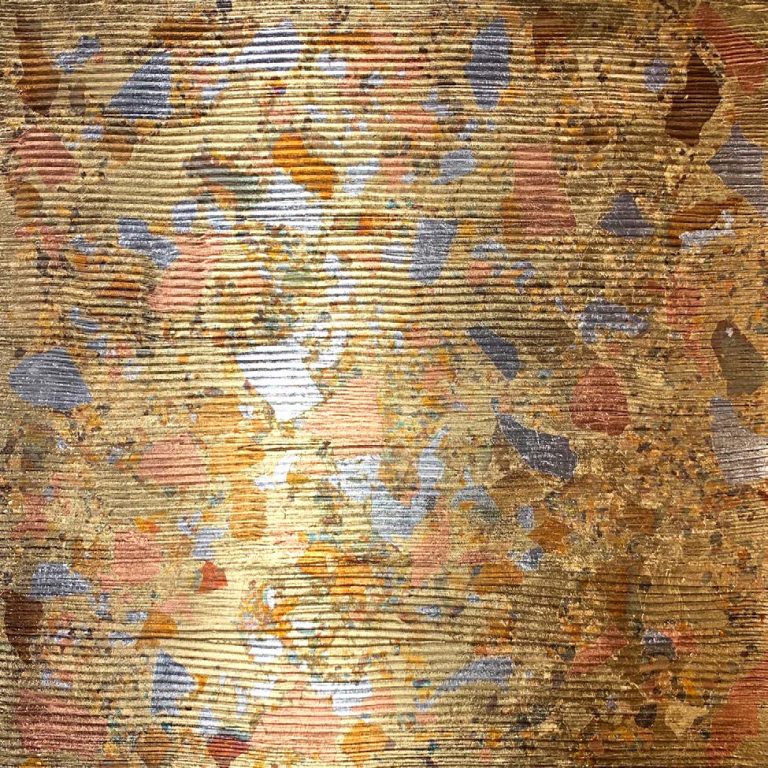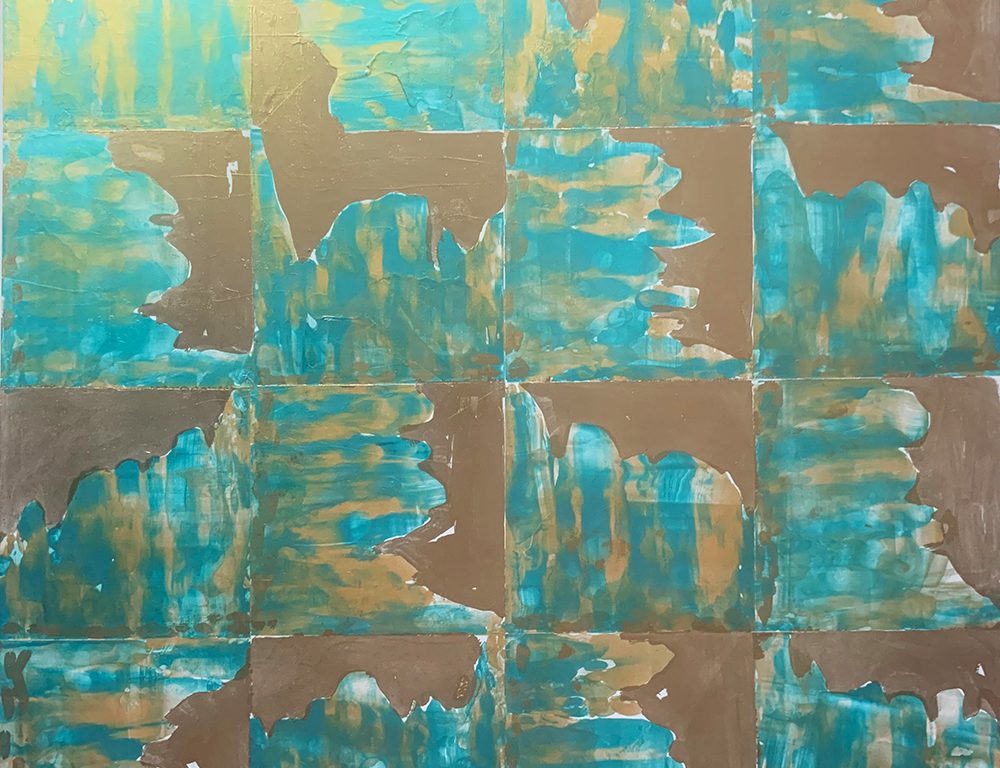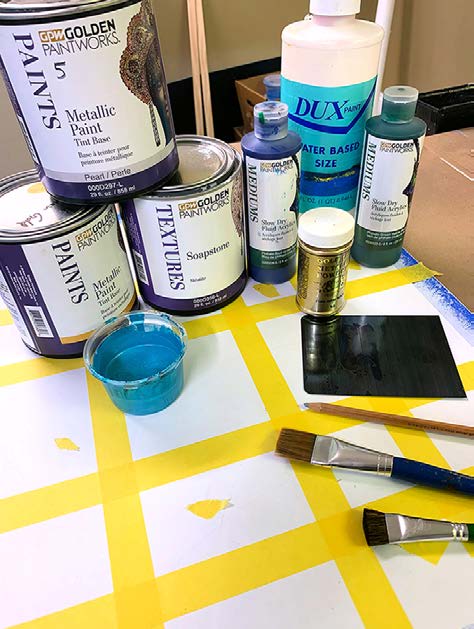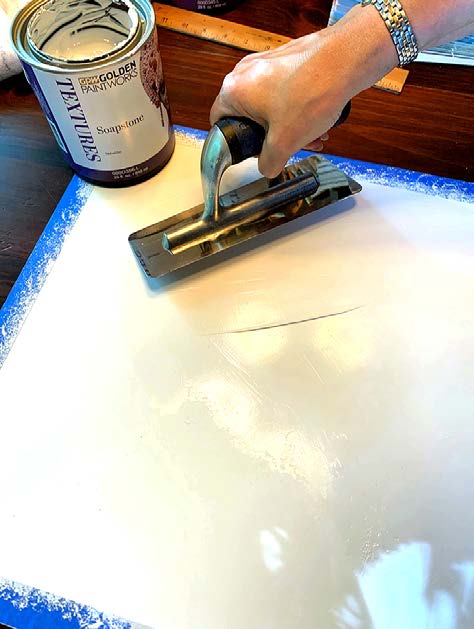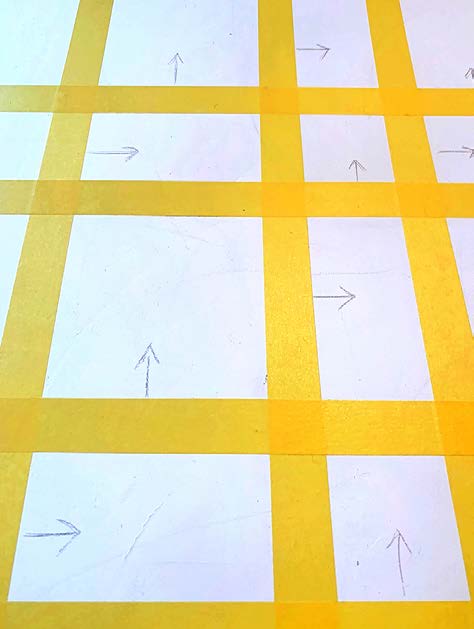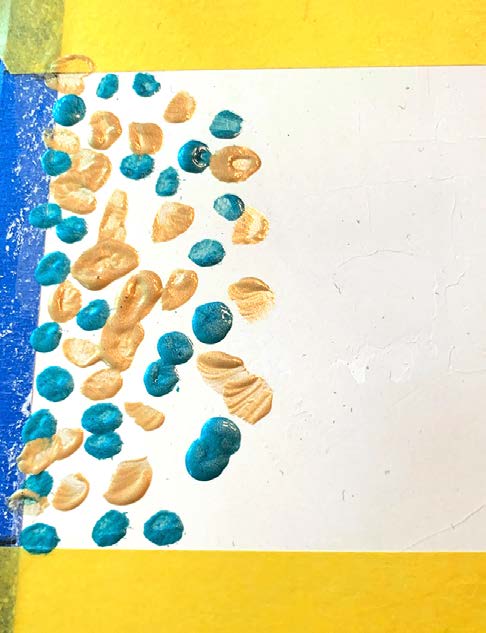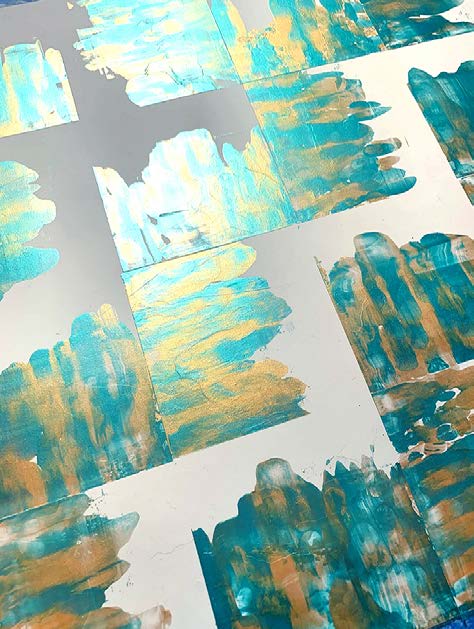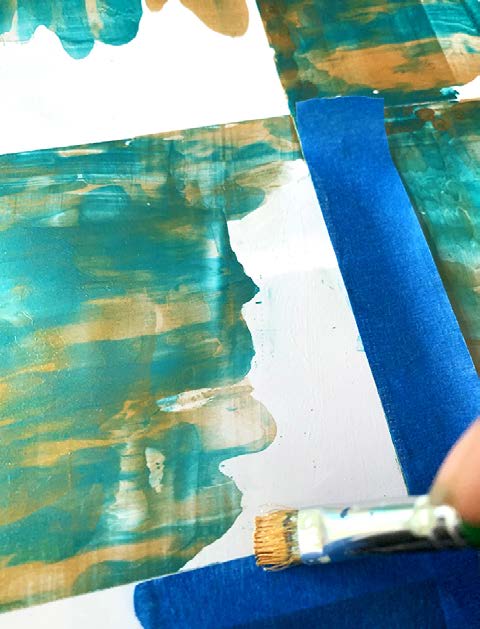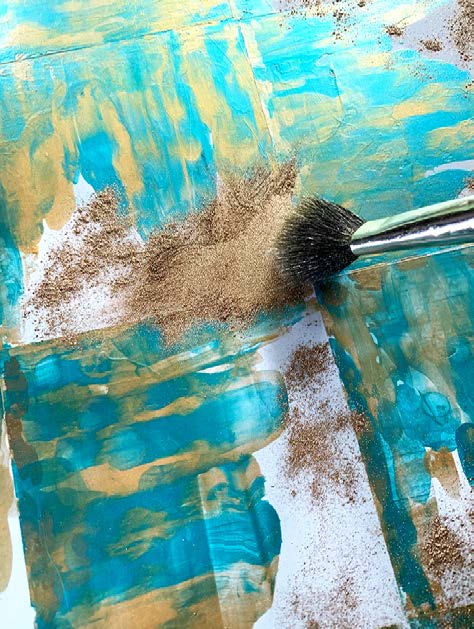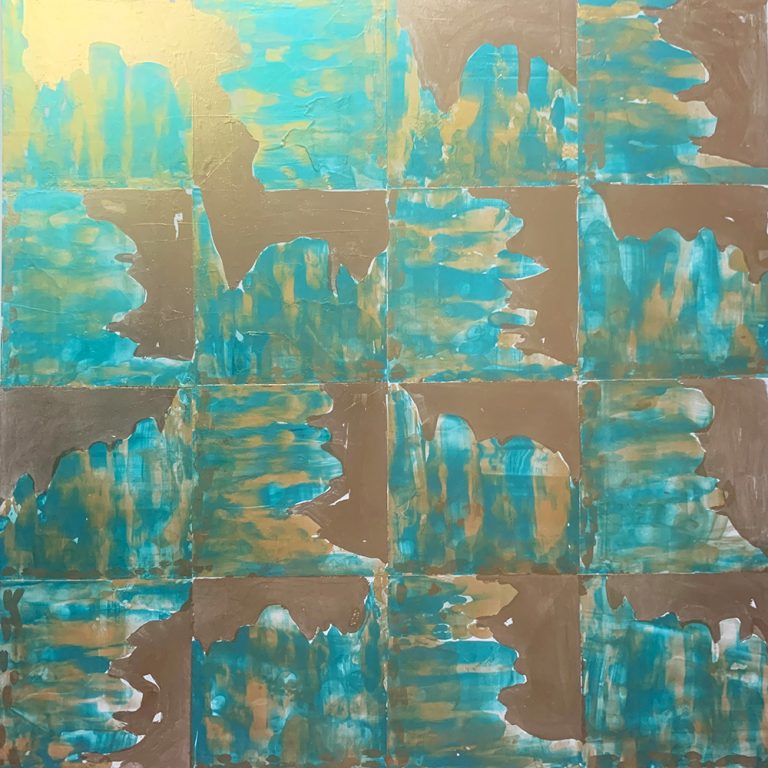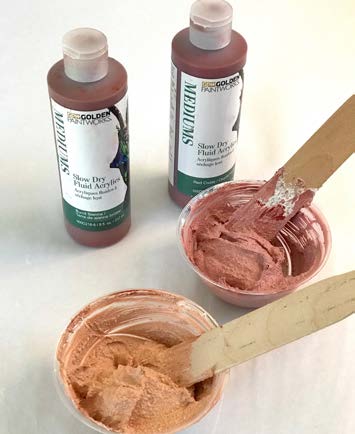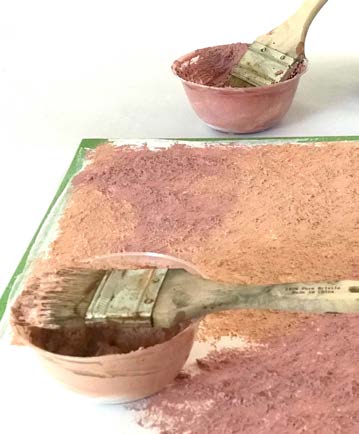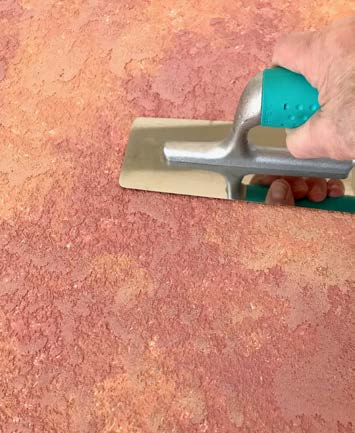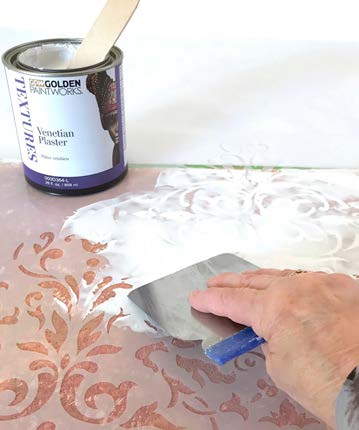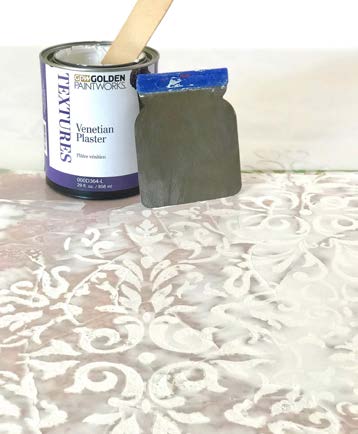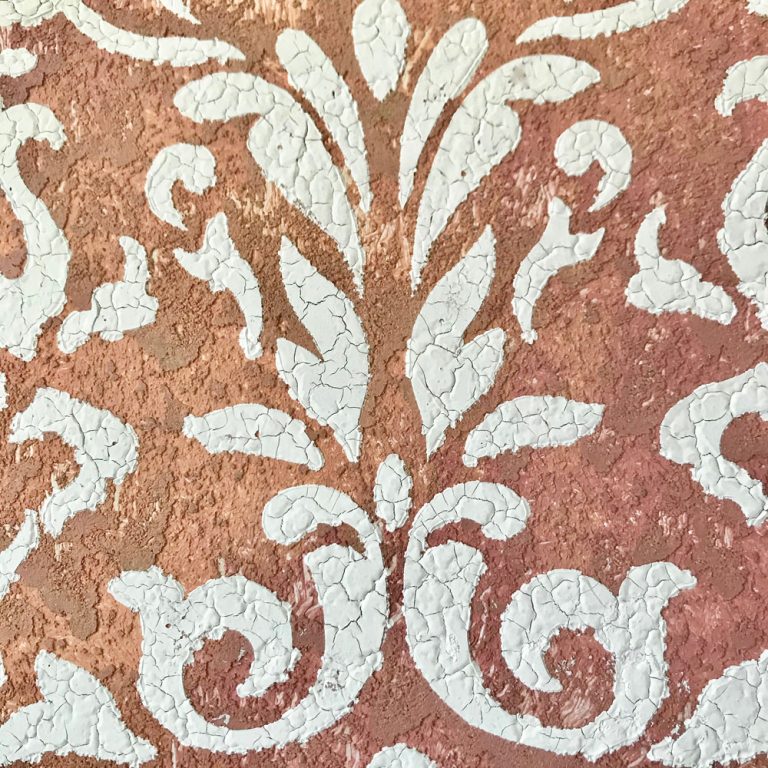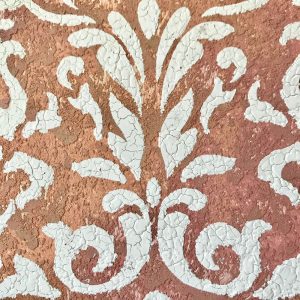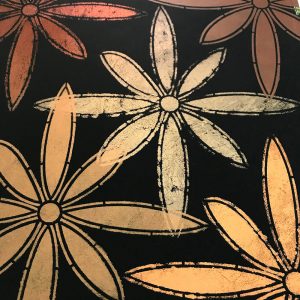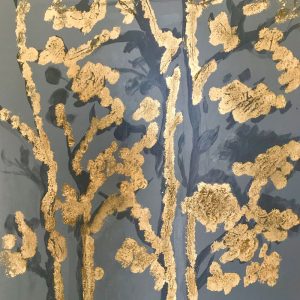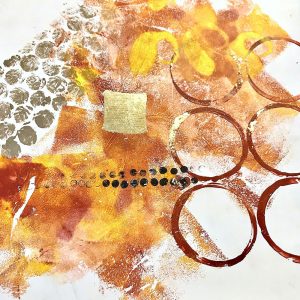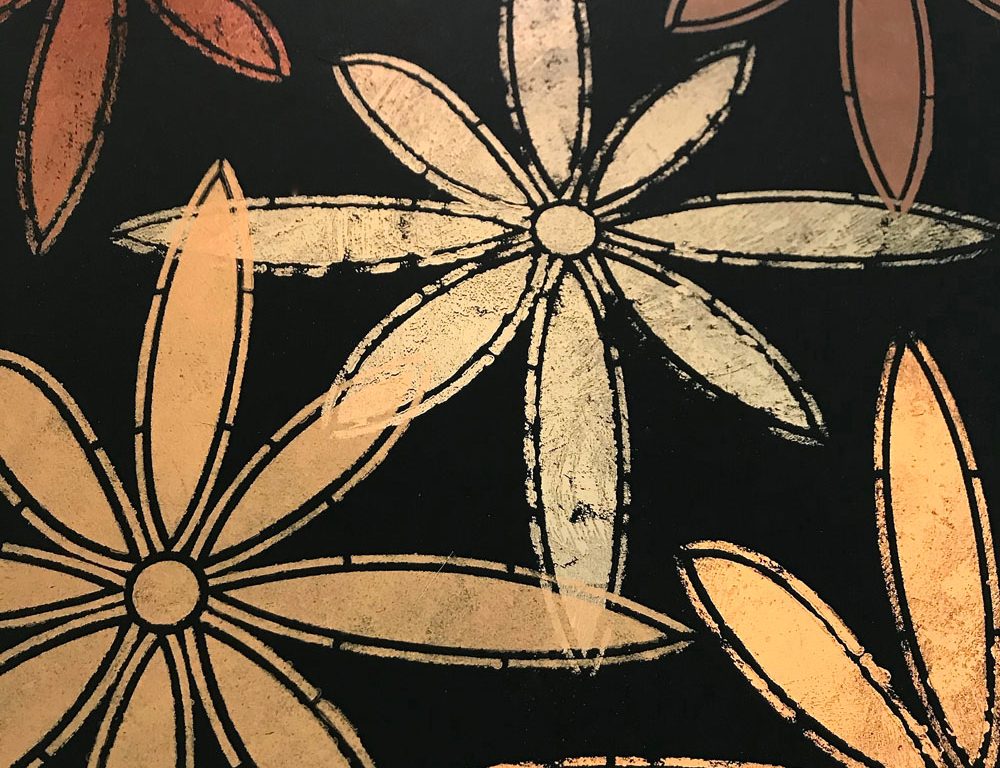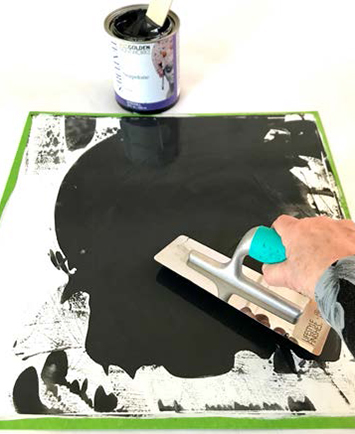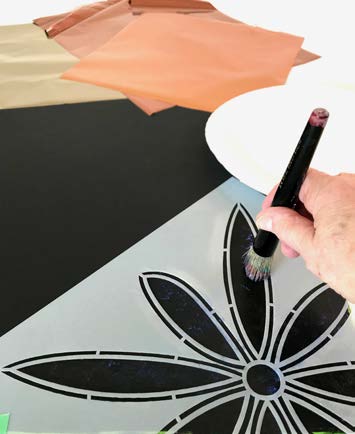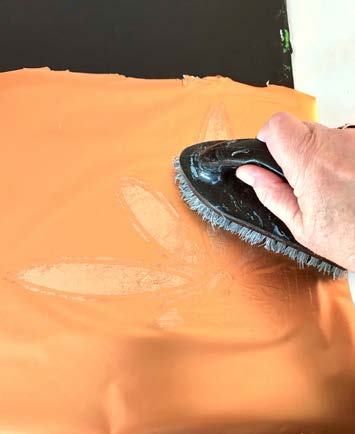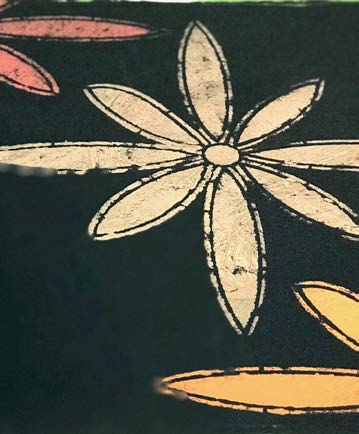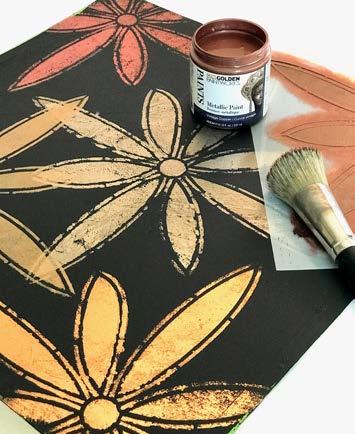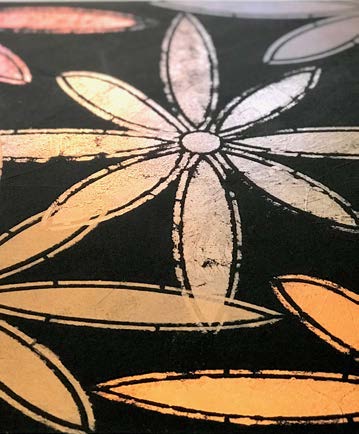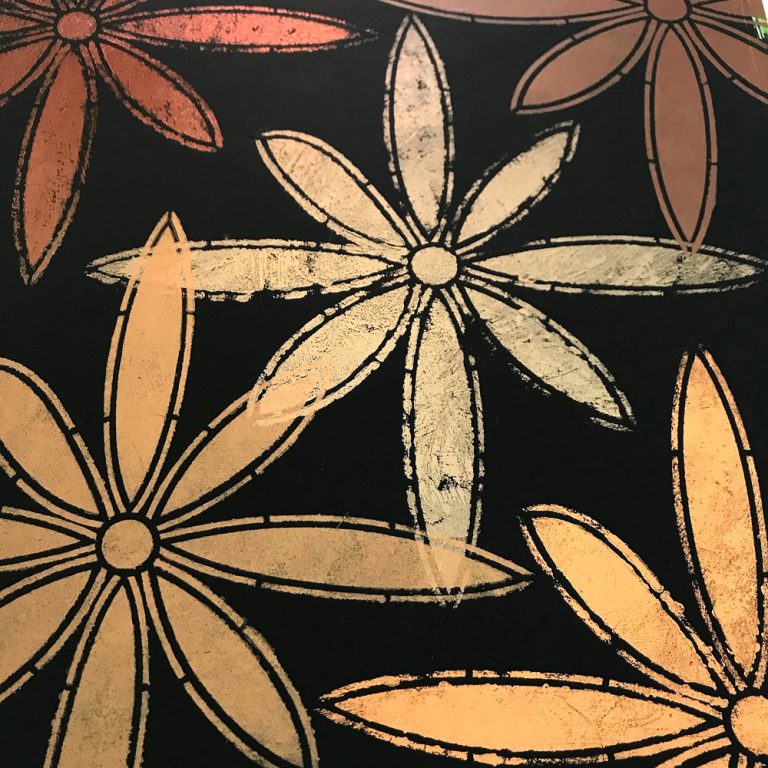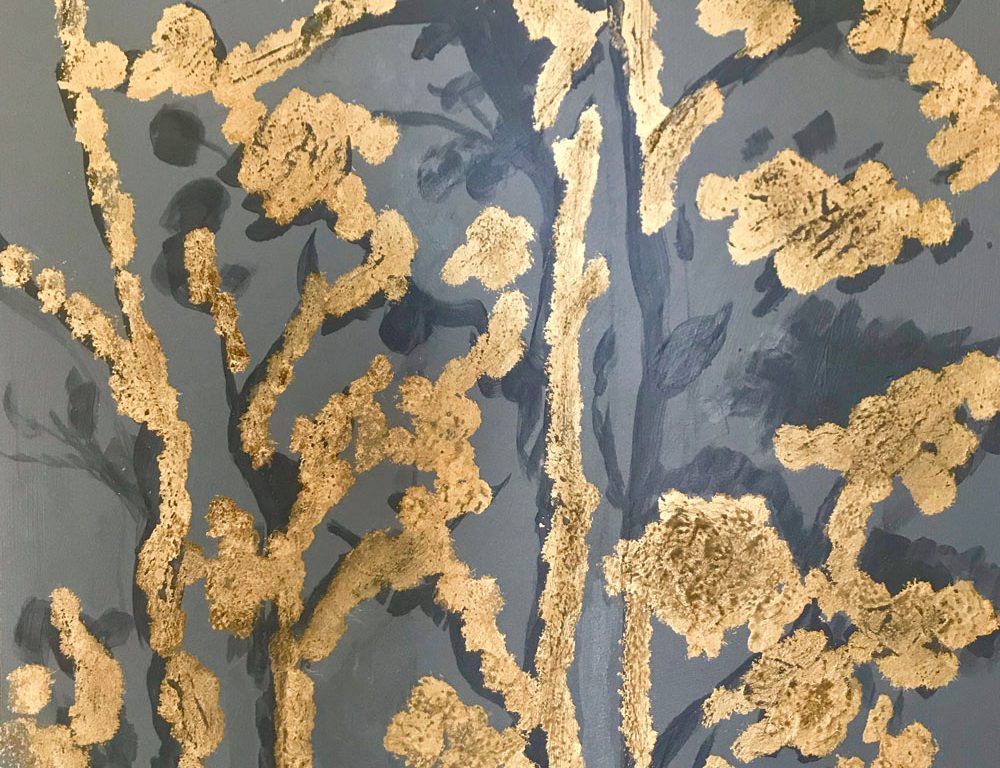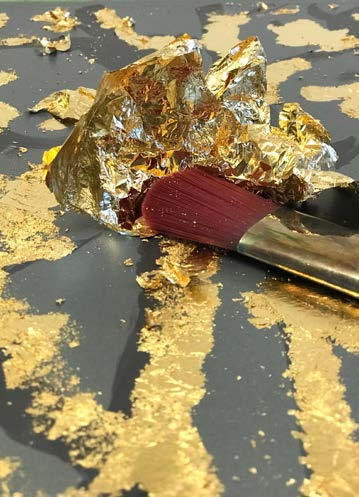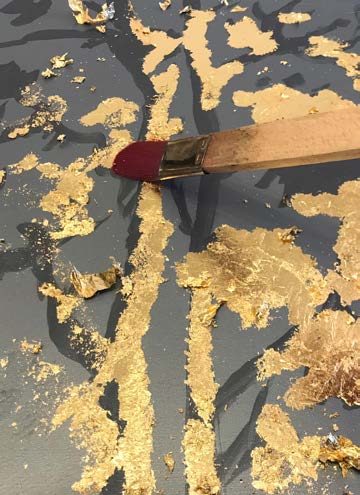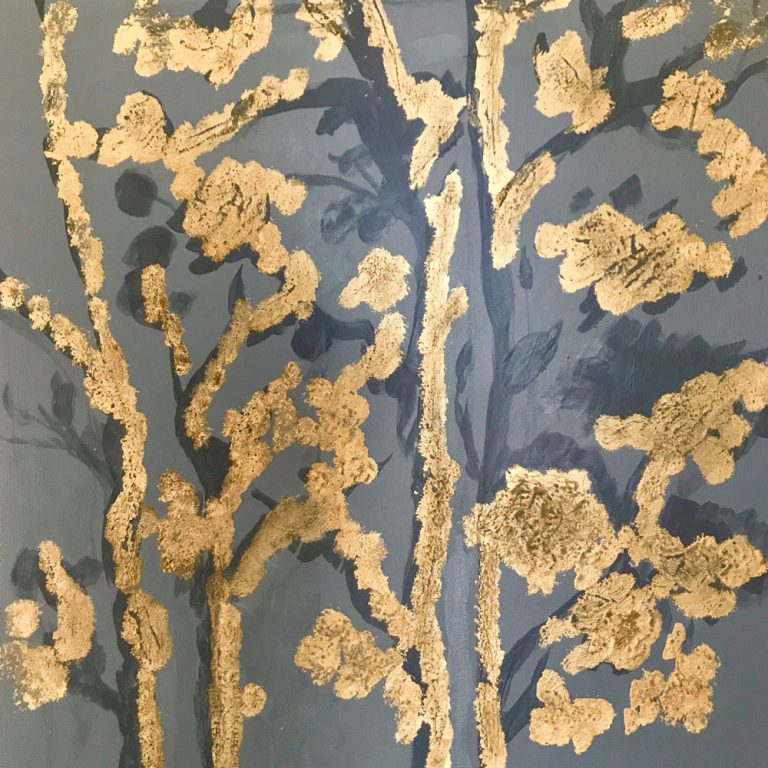
DECORATIVE FINISH HOW-TO
Rusted Steel with Rivets
Artist: Arteriors
Share this article
PROJECT SUPPLIES:
- Golden Paintworks Metallic Texture: Tint Base Pearl (tinted to Benjamin Moore Whale Grey 2134-40)
- Golden Paintworks Pre-Mixed Metallic Paint: Pewter and Bright Silver
- Golden Paintworks Clear Topcoat Dead Flat
- Primer tinted to a Medium Gray
- Flat Black Acrylic House Paint
- Benjamin Moore (all flat sheen): Rustic Brick 2091-20, Grizzly Bear Brown 2111-20 and Bronze Tone 2166-30
- Mixing Sticks and Containers
- Paint Brush
- Trowels
- Sea Sponge
- Stencil Brush or Upholstery Foam Pieces
- Straight Edge Level
- Pencil
- Low-tack Painter’s Tape
- Mylar for Stencil Cutting
- Exacto Knife
INSTRUCTIONS:
Introduction: Choose this finish if you are looking for a “WOW” surface design with an industrial chic appeal. The Golden Paintworks products used create an extremely realistic faux rusted steel finish. Because the results are fairly easy to achieve, this is both fun to do and to show!
1 | Prime and then base coat with flat black acrylic house paint. Allow to dry completely.
(Photo 1)
2 | Trowel over black base coat with the Metallic Texture Pearl Base tinted to a color similar to Benjamin Moore Whale Grey 2134-40. You can have it tinted by your local Golden Paintworks retailer or use either the Metallic Textures Pre-Tinted Silver Mule or Wrought Iron colors. If you are not an experienced Metallic Texture applicator, refer to Golden Paintworks instructional video for Metallic Texture on their website. Let dry. Repeat this step over the first Metallic Textures trowel base, using the same tinted Metallic Texture Pearl Base. Let dry completely.
(Photos 2-4)
Pour a small amount, approximately 1/8 cup of the rust color onto a flat surface and tap one side of damp sea sponge into the wet paint. Apply one color at a time using the sea sponge. Tap an organic, random pattern over the surface, leaving approximately 50% of open areas. Put very little paint on the sea sponge, using only one side of the sponge. Don’t overdo it. Soften immediately with the back, clean side of the sponge. Rinse sea sponge in water, wring out and apply second and third colors in the same manner, softening each color as you go. Repeat until they look like rust spots.
(Photos 6-7)
5 | Establish where your source of light is coming from to create the trompe l’oeil rivets and sheet metal edges. In our case, it’s coming from the top right. All shadow is going to go away from the light to bottom left. We will call the top right the light side and the bottom left the shadow side. Using a straight edge level, draw in pencil where your seams between the metal sheets are going to be.
(Photo 10)
With a pointed artist brush, paint over the pencil marks in the flat black paint. While the black painted line is still wet, soften with a damp rag on the shadow side.
(Photo 11)
6 | Use a rivet stencil with ¾” diameter circles on one line, 1 ½- 2″ apart, or draw and cut your own stencil pattern from mylar. Place the stencil of the row of circles approximately 1 ½” distance from the seam and parallel to the seam. Hold the stencil in place with the low-tack painter’s tape.
(Photo 12)
Pour a small amount of the flat black paint used for the base coat onto a flat surface. Dab a stencil brush or piece of upholstery foam into the black paint, tap off onto a rag so that application is fairly dry and then dab the applicator over the circular holes until they are solid black. Remove the stencil immediately and while still wet soften the shadow side with a damp rag. Let dry.
(Photo 13)
7 | Place stencil again on the holes. Move the stencil up a little towards the light side. You will see a moon shape inside the stencil. Stencil with the Pre-Mixed Metallic Paint Pewter. Let dry.
(Photo 14)
8 | To create a highlight on the rivet, use a pointed art brush and paint a half moon shape with Pre-Mixed Metallic Paint Bright Silver on the side with the light source. With a damp rag, wipe a bit of the Bright Silver to soften towards the middle of the rivet. Let dry. With an art brush, apply a rivet shadow by painting a half a moon shape with flat black on the shadow side. Soften towards the middle of the rivet. Let dry.
(Photos 15-16)
Featured Products
About the Artists
Amiel and Stephanie Mesner are a husband-and-wife team of fine artists who turned their love and knowledge of the fine and decorative arts into a company with over thirty-five years of experience, creating custom surface designs for the architectural and interior design industry. Arteriors, based in Natick, MA, handles professional design projects from idea and design creation through to finished application in a versatile, detail-oriented, expert manner. Dedicated to using eco-friendly decorative paint and plaster materials that are not only beautiful when applied, but responsible, Arteriors applies water-based paints and lime-based plasters, such as Venetian plasters, and American clay surface finishes which are safe, natural, and sustainable and can improve indoor air quality.
More from this artist
Looking for more inspiration? Click here to view all of the decorative finishes from our Limited Edition Collections.


